As an award-winning cookbook author with 20+ years of experience developing gluten-free recipes, I understand first-hand the trials and tribulations of gluten-free baking. In this post, I aim to teach you the basics of baking well with gluten-free flour and how to combine gluten-free flours for the best outcome.
I break down all of the different types of individual gluten-free flours, including almond flour, oat flour, buckwheat flour, teff flour, and coconut flour (and more!) and share their best uses, plus recipe suggestions. With the help of this trustworthy guide and my tips, you'll be baking gluten-free at home with confidence and great results in no time!
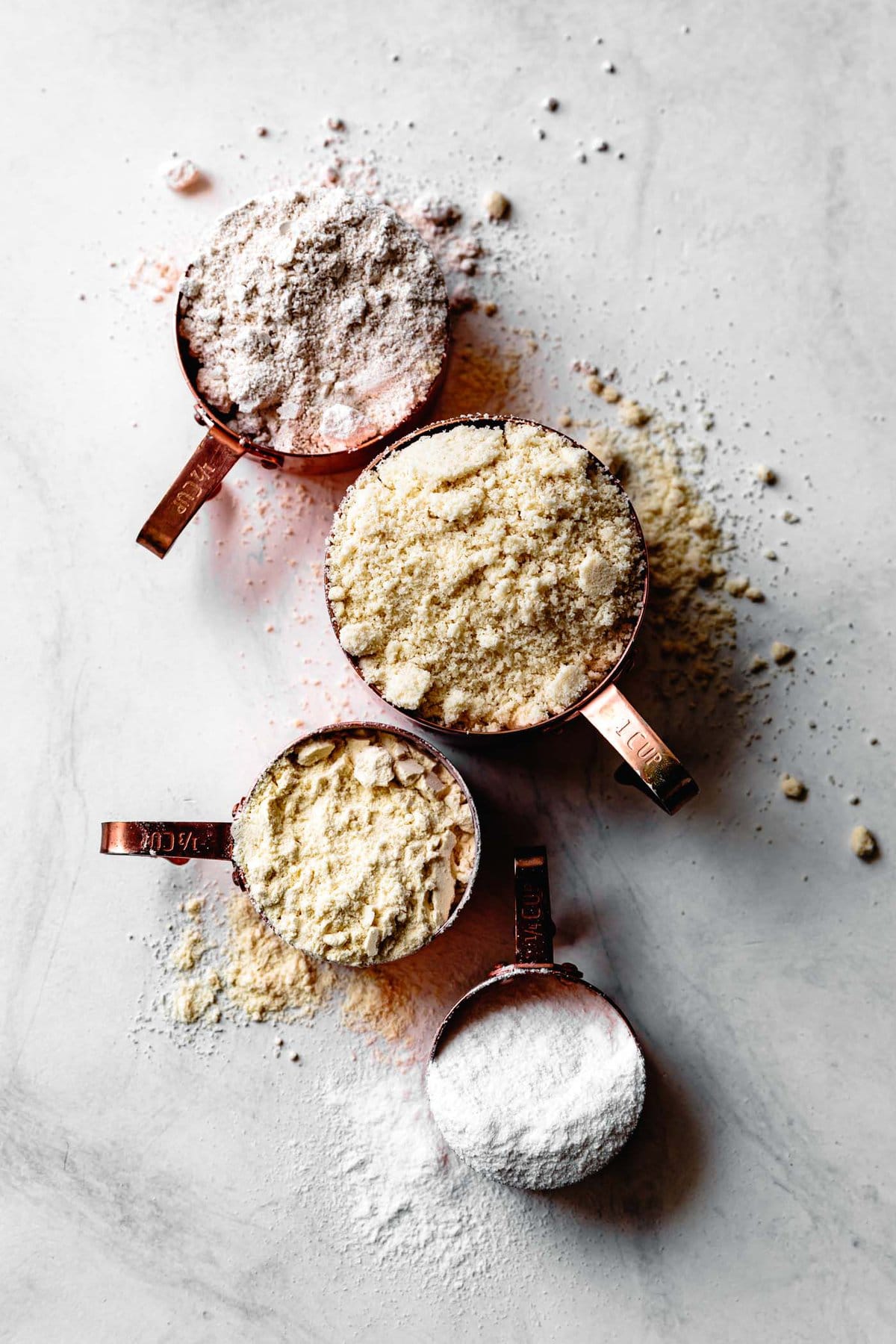
If you've suffered gluten-free baking fails – crumbly cookies, cardboardy cakes, or dry desserts – you're not alone. Gluten-free baking has quite a learning curve, and there are many subpar recipes out there. I've been there.
Whether you've been recently diagnosed with gluten-intolerance due to celiac disease, another autoimmune condition, IBS, SIBO, or if you simply feel better going gluten-free, I've got you covered with this guide to baking with gluten-free flours. You'll be bending almond flour, buckwheat flour, coconut flour and more to your will in no time!
Table of Contents
- Gluten-free baking: from fail to flourishing
- Gluten-Free Flour FAQs
- Flour Power: harnessing the strengths of flavorful flours
- Sweet Rice Flour
- Oat Flour
- Millet Flour
- Sorghum Flour
- Buckwheat Flour
- Teff Flour
- Corn Flour
- Almond Flour
- Cassava Flour
- Coconut Flour
- Chestnut Flour
- Tapioca Starch
- Corn Starch
- Gums
- Less-Common Flours
- Flours to Avoid
- Gluten-Free Flour Blends
- Gluten-Free Baking Tips
- Troubleshooting Gluten-Free Recipes
Gluten-free baking: from fail to flourishing
My first batch of gluten-free cookies, made circa 2003, was an epic fail. Gluten-free recipes were few and far between, but I knew I felt better eating gluten-free. So I swapped brown rice flour for wheat flour in a classic chocolate chip cookie recipe.
While the cookies *looked* the part, they crumbled into a million pieces when I tried to pick one up. After that, there were rubbery brownies, oddly textured muffins, and crumbly cakes that my friends and family gamely suffered through as I learned from my mistakes.
Eventually, though, all the experimentation paid off, and I can now turn out recipes that aren't just "good, for gluten-free" but are more tender, moist, and flavorful than their wheaty counterparts. My recipes come together with a minimum of fuss, piquing the palate of the most sensitive celiac to the most ardent wheat-eater.
Here, I'm sharing my knowledge gleaned from 20 years of gluten-free baking. I'll tell you everything you need to know about a variety of gluten-free flours, including how to combine flours for the best taste and texture, how to substitute gluten-free flours, and my top gluten-free baking tips.
If you're a total "grainiac" and hungry for even more, grab a copy of my cookbook Alternative Baker: Reinventing Dessert with Gluten-Free Grains & Flours. It's is an ode gluten-free flours and includes over 100 original recipes only available in the book.
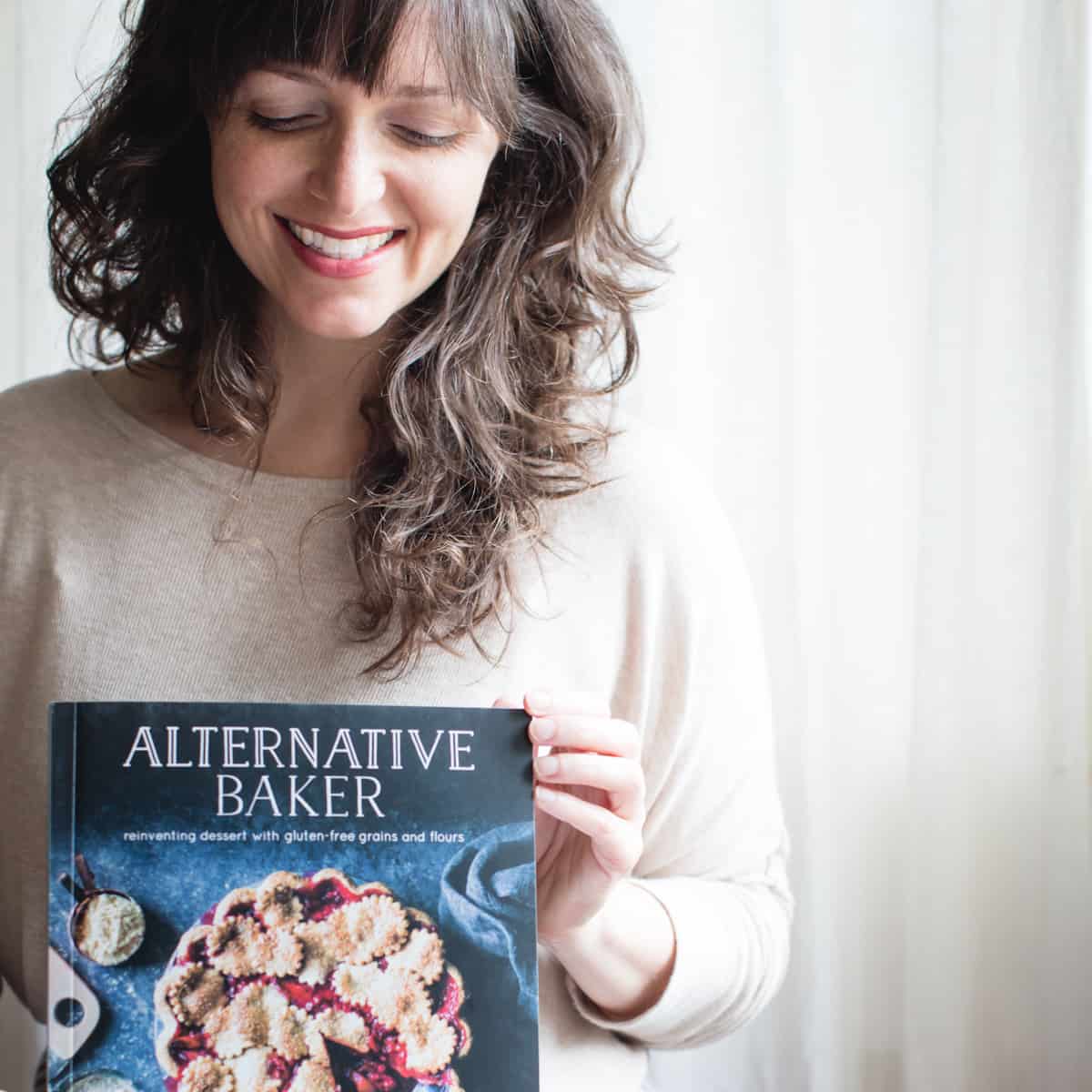
Gluten-Free Flour FAQs
Almond, amaranth, arrowroot, banana, buckwheat, cassava, chestnut, coconut, corn, hazelnut (and all other nuts and seeds), mesquite, millet, oat, potato, quinoa, rice (brown, white, sweet rice), sorghum, tapioca, teff, tiger nut.
Bob's Red Mill gluten-free 1-to-1 baking mix is my favorite gluten-free all-purpose flour blend for baking. It has a mild texture and plenty of "stick" thanks to a blend of sweet rice flour, brown rice flour, and sorghum flour, plus some starches and xanthan gum. However, using individual gluten-free flours is preferred. More info on this below!
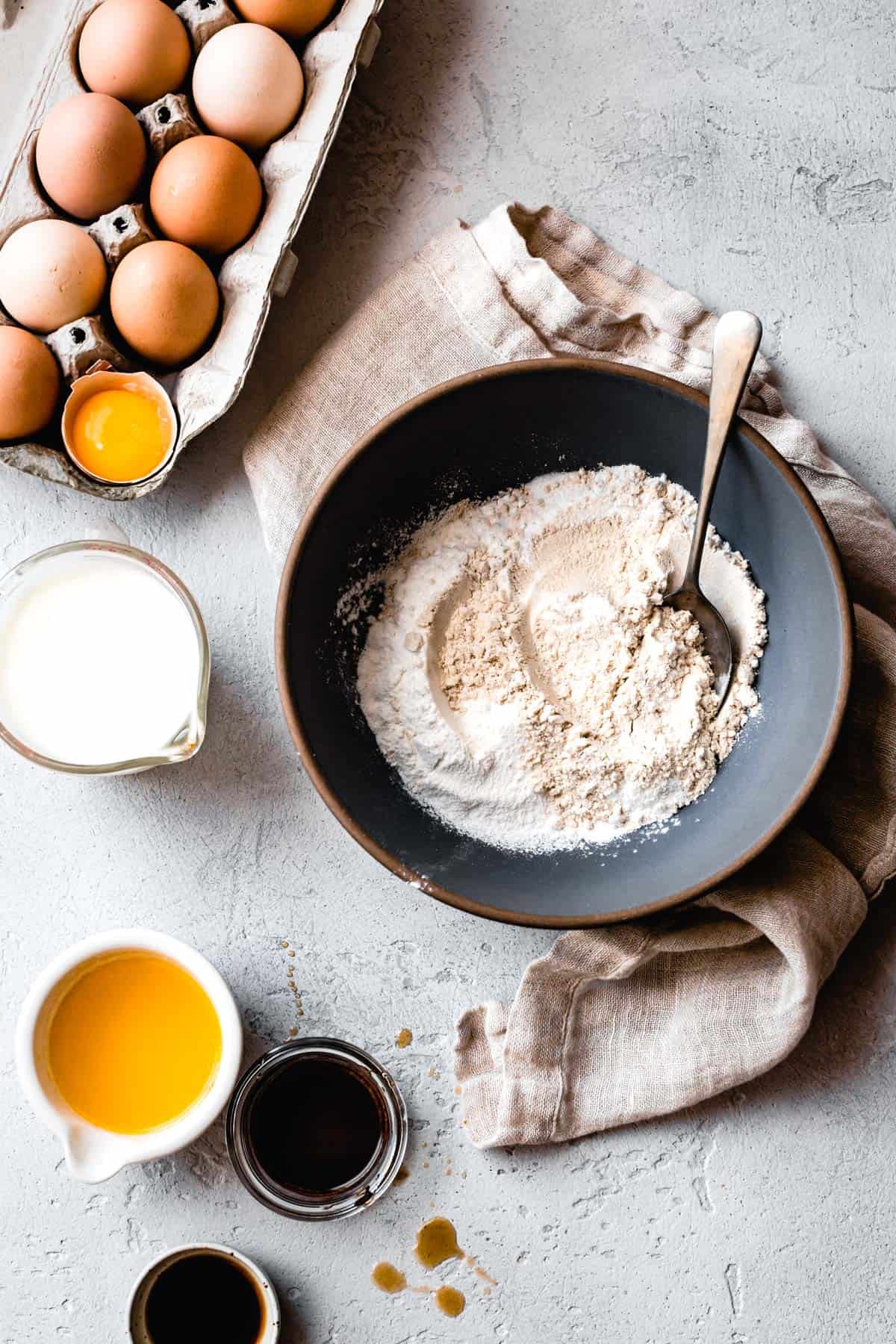
Flour Power: harnessing the strengths of flavorful flours
So why not just use commercial all-purpose baking mixes?
Most gluten-free baking recipes rely on store-bought or DIY blends of flours designed to mimic all-purpose wheat flour. But I've found that these so-called all-purpose gluten-free blends don't work as a direct 1-to-1 substitute for wheat flour across all recipes.
For example, gluten-free pie crust dough needs more stickiness to make it pliable enough to shape into a crust. Conversely, gluten-free pancake batter cooks up more crisp and ethereal with less starch. Cookies, cakes, and muffins need something in between.
Additionally, baking with these bland blends means that the base of every baked good tastes the same, and that's just boring. You're missing out on tasting creamy oat flour, nutty almond flour, malty teff flour, and so forth. Many whole-food flours contain nutritional value from fiber, protein, vitamins, and minerals that starchy blends sadly lack.
After years of experimenting with store-bought and DIY all-purpose gluten-free flour blends, I've come to prefer combining 2-4 different gluten-free flours in each recipe I create. This method of choosing a bespoke blend of a few flours per recipe allows me to get the best texture and flavor for each individual dish. When you make my gluten-free recipes with flavorful flours, you won't want to go back to using boring all-purpose blends!
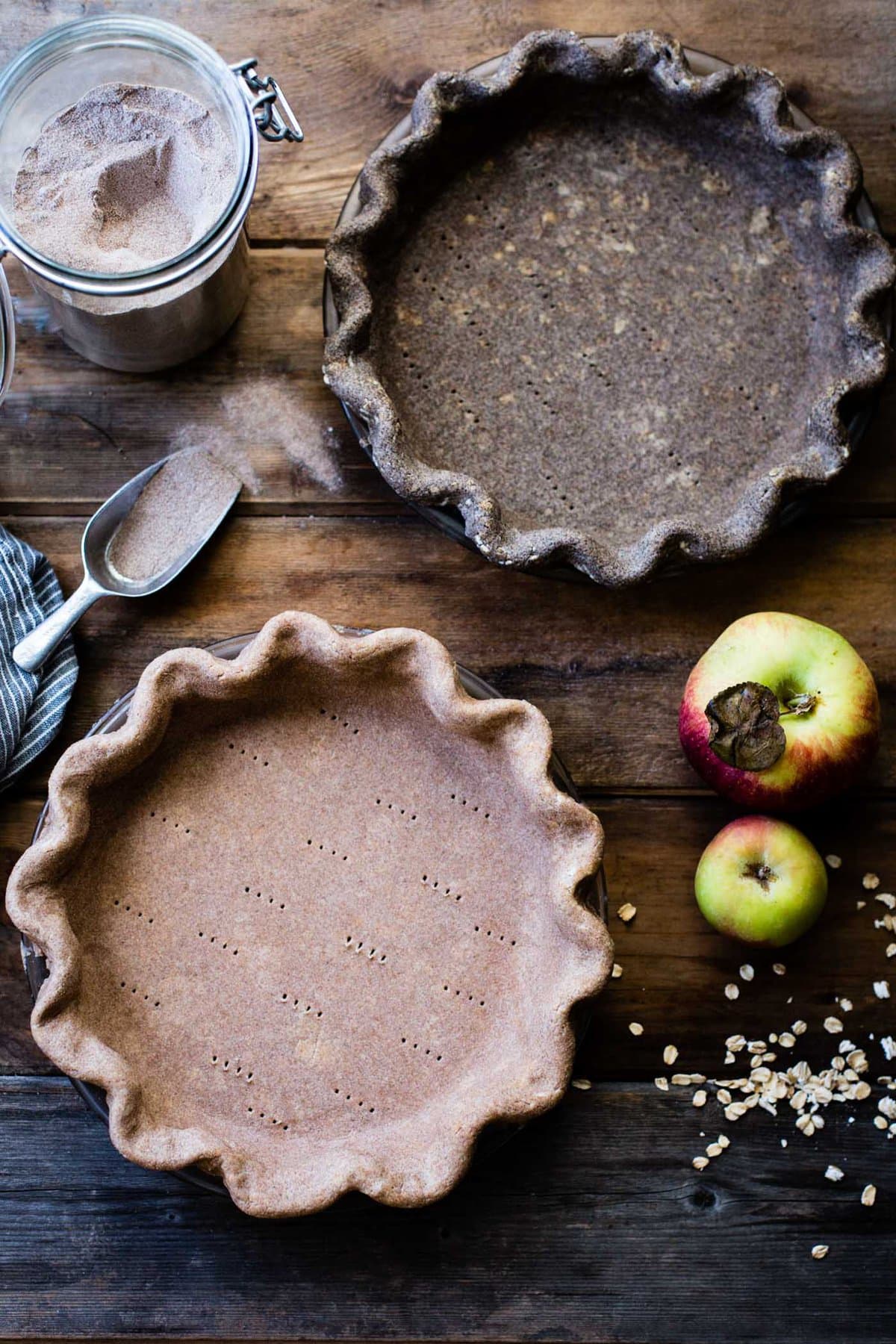
Gluten-free flours range from dark, toasty buckwheat flour to ethereal sweet rice flour and everything in between. There's nubby almond flour, creamy oat flour, and grassy sorghum flour, all lending their unique flavors and textures to pies, cakes, cookies, and more.
The flours that I share below are my favorites to use in baked good recipes. They have the ability to create smooth, moist, and springy-texture baked goods without any grittiness (I'm looking at you, brown rice flour) or strong, savory flavors (oh hai chickpea & quinoa flour).
NOTE: For highly sensitive folks, such as those with celiac disease, be sure to source gluten-free flours that are processed in certified gluten-free facilities. Look for the "GF" symbol as shown on the bags below!
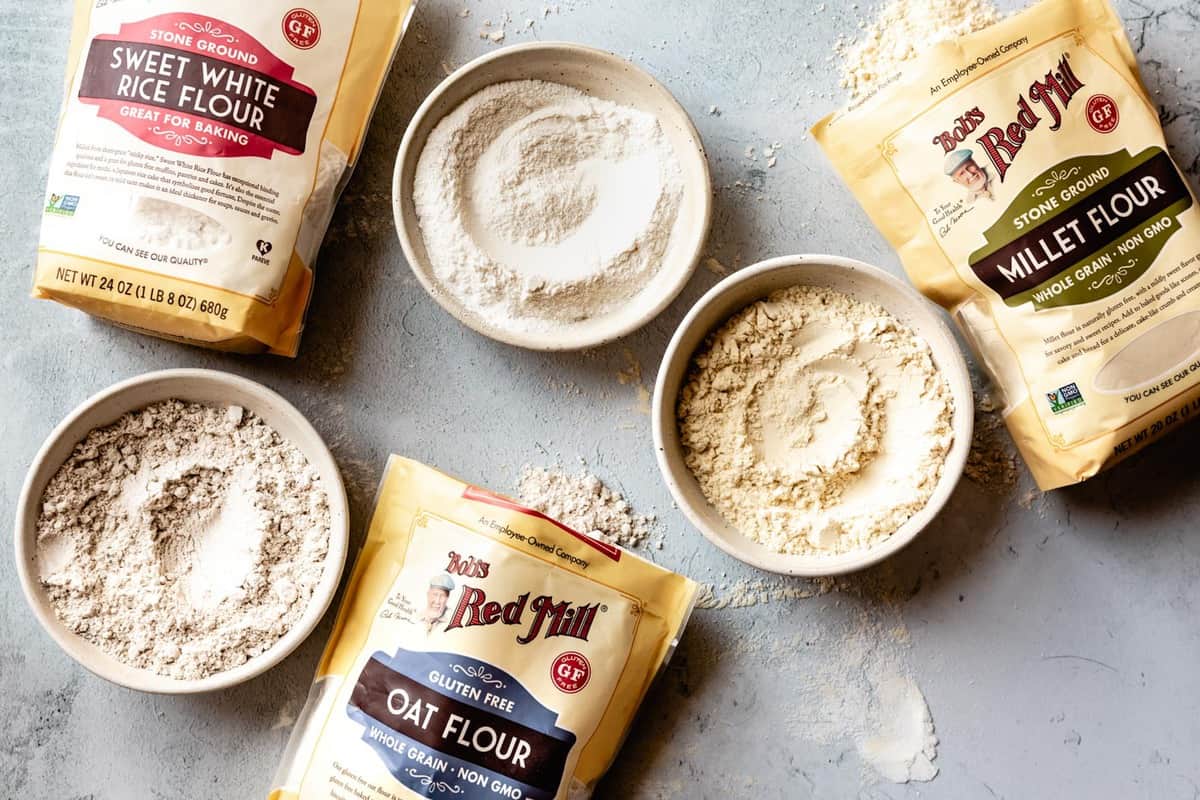
Gluten-Free Flours with a Neutral Flavor
These must-have flours form the base of many favorite gluten-free recipes.
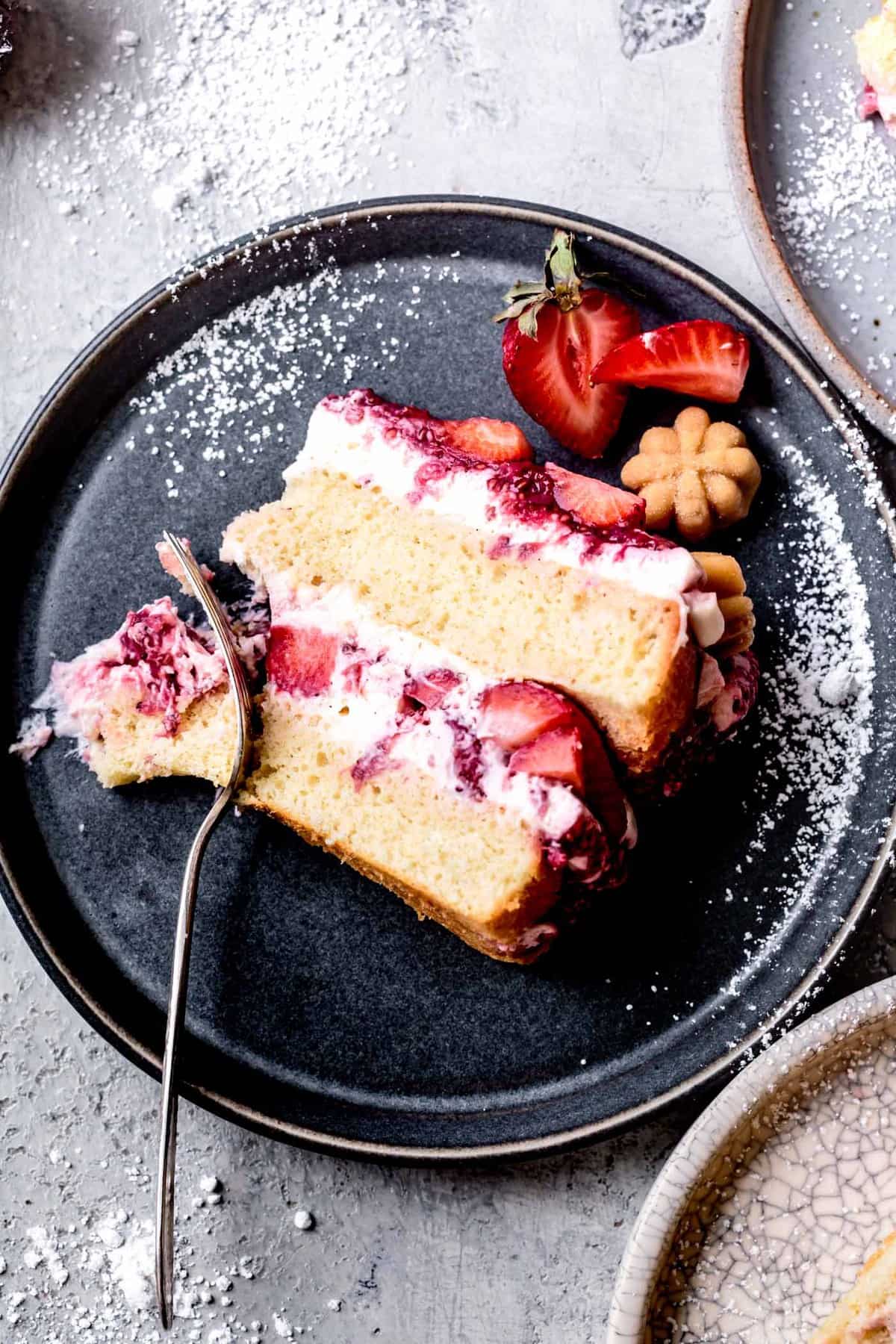
Sweet Rice Flour
Not to be confused with regular white rice flour, sweet rice flour is finely ground from a specific type of rice referred to as sticky rice or glutinous rice (though it doesn't contain gluten). It's more starchy, sticky, and finely ground than regular white or brown rice flour. I often use it as a base in gluten-free baking recipes, blending it with other whole-grain flours. It's commonly used in mochi in Japanese and Hawaiian baking.
- AKA: glutinous rice flour, mochi flour, my GF baking secret weapon!
- Flavor: neutral, mild, sweet
- Feel: Soft, fine, starchy, sticky
- Recommended brands: Koda Farms Blue Star Mochiko (my favorite!), Bob's Red Mill (my second favorite!)
- Weight per cup: 5.5 ounces (155 g)
- Substitute by weight: cassava flour, GF AP flour blend such as Bob's Red Mill 1 to 1; or try 4 parts white rice flour + 1 part tapioca flour
- Find it: In Asian markets, natural grocers, order online
- Use it: In nearly anything; sweet rice has a neutral flavor that goes with everything from pancakes to cookies to pie crust. Unless you're making mochi, don’t use more than 50 percent sweet rice flour in any given recipe or it may turn out gummy and dense.
Favorite sweet rice flour recipes:
- Gluten-Free Sponge Cake: Light, fluffy, and perfect for making gluten-free layer cakes, and tiramisu, and tres leches cake thanks to whipped egg whites, leavening, and a neutral flour blend.
- Gluten-Free Brownies: Sweet rice flour gives these deep, dark, chocolatey brownies a chewy bite.
- See more sweet rice flour recipes here!
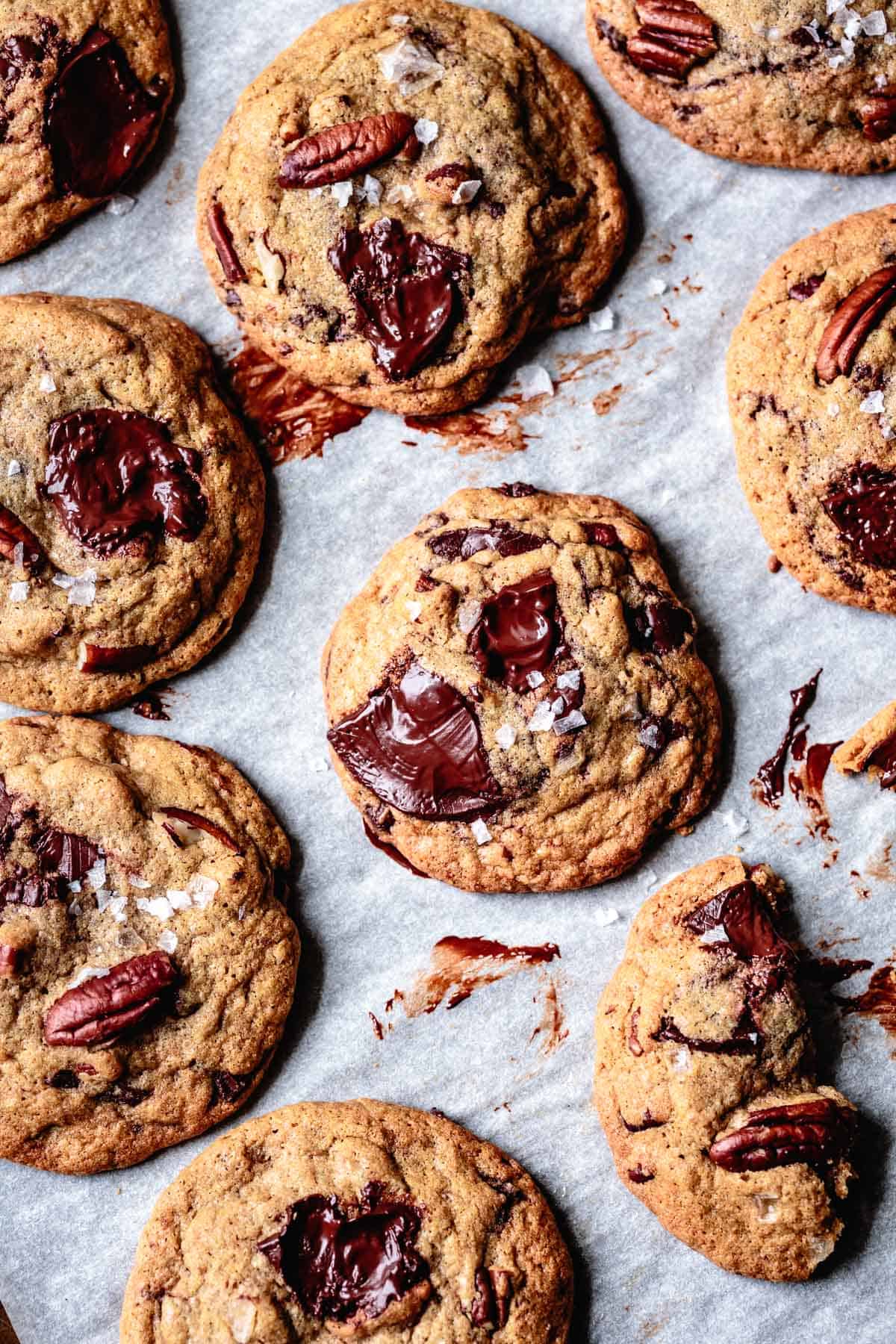
Oat Flour
With its creamy, earthy flavor and delicate texture, gluten-free oat flour is a staple of my gluten-free baking recipes. It bakes up soft and smooth, adding necessary starch to many GF baked goods and keeping them moist and tender due to its high fat content and stable protein structure. It makes pillowy biscuits, springy cakes, and hearty muffins.
Note that some people with celiac disease can’t tolerate oats, even the certified gluten-free variety.
- Flavor: Creamy, sweet, wheaty, nutty, a little earthy
- Feel: Soft, tender, starchy, delicate
- Recommended brand: Bob’s Red Mill (certified gluten-free)
- Weight per cup: 3.5 ounces (100 g)
- Substitute by weight: sorghum flour (but will be more delicate); teff, buckwheat, or chestnut flour (but will have a stronger flavor)
- Use it: Anywhere you want a touch of whole-grain flavor and soft, delicate texture. Oat flour pairs well with comforting flavors such as apples, bananas, winter squash, spices, chocolate, caramel, brown sugar, honey, maple, nuts and dried fruits. When used in conjunction with sweet rice and millet flours, it makes an all-purpose-like flour with a fairly neutral taste and pillowy texture.
- Health benefits: Higher fat content than most cereal grains, high in fiber, only grain to contain globulin, a legume-like protein that can be a boon to vegetarians. These properties give oatmeal its “stick-to-your-ribs” reputation. Oats are also an excellent source of manganese, which helps build connective tissue in the body, regulate blood sugar and absorb calcium, and are a good source of other minerals.
- Gluten-Free Carrot Cake: A blend of oat, millet, and sweet rice flours give this cake a delightfully pillowy texture laced with spices and smothered in dreamy cream cheese frosting.
- Soft & Chewy Gluten-Free Chocolate Chip Cookies: With browned butter, loads of chopped bittersweet chocolate, and earthy oat flour. Ready in under an hour!
- Gluten-Free Oatmeal Cookies: Soft and chewy, with chocolate chunks or cinnamon and raisins.
- Gluten-Free Blondies: Chewy gluten-free cookie bars studded with chocolate and scented with brown sugar and vanilla. Easy to make and super satisfying.
- See more oat flour recipes here!
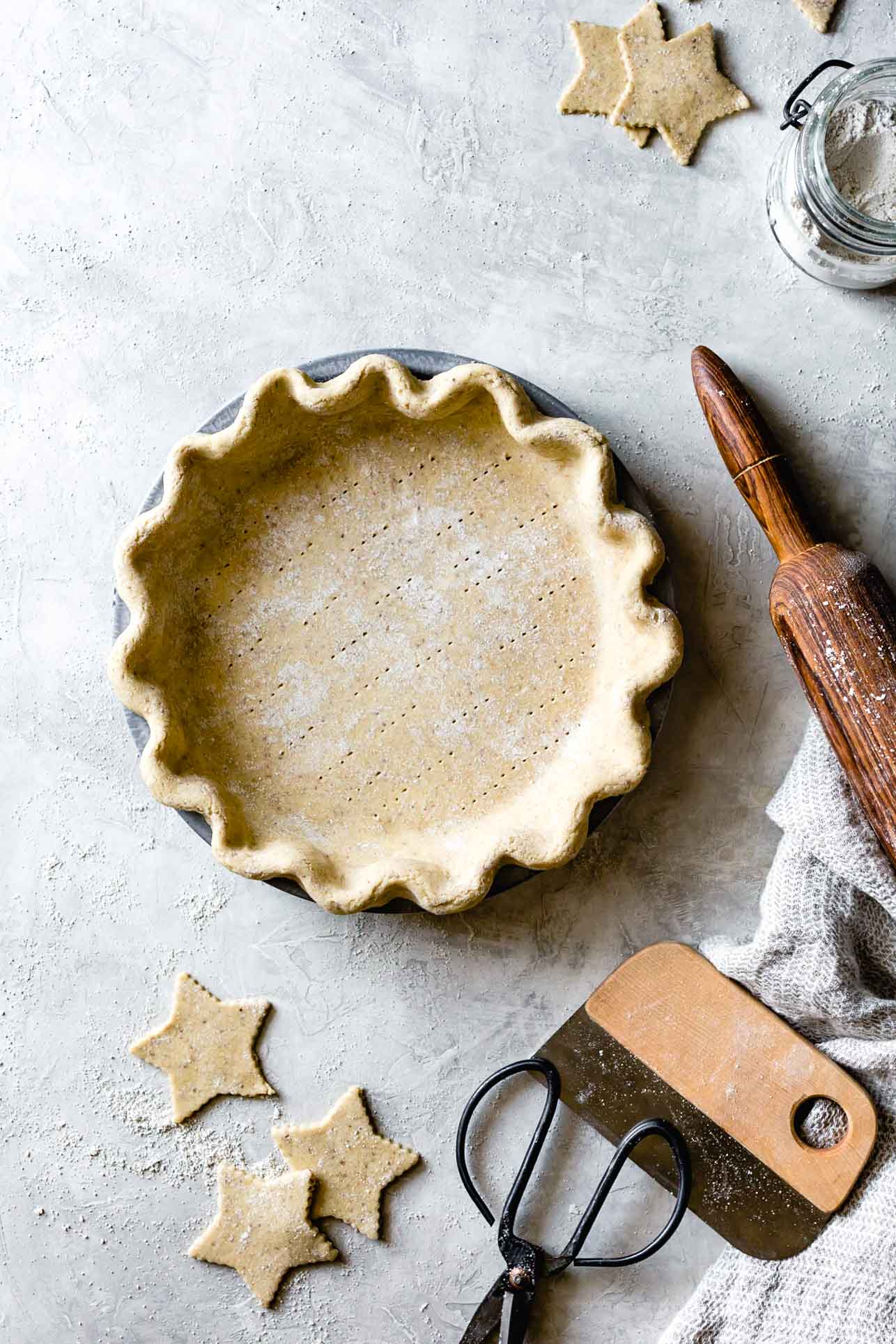
Millet Flour
You've probably seen small, butter-yellow millet seeds in birdseed, but millet has been a staple food for humans for over 10,000 years. When ground, it makes a mild-tasting flour that adds tenderness to gluten-free baked goods.
- Flavor profile: Warm, buttery, vegetal, nutty, some bitter notes
- Consistency: Fairly fine and starchy with a bit of sandy texture, slightly clumpy
- Recommended Brand: Bob’s Red Mill
- Weight per cup: 4.5 ounces (130 g)
- Substitute by weight: sorghum flour, corn flour, teff flour (but will have an earthier flavor and darker color)
- Use it: Millet is one of my top three used flours for its mild flavor and starchy, finely milled texture. In conjunction with sweet rice and oat flour, it makes a neutral flour that mimics all-purpose. Millet flour tastes a bit like cornmeal or corn flour and pairs well with similar flavors, such as honey, berries, stone fruit, citrus, vanilla and dairy. It can have some bitter undertones, however, which is why I recommend using no more than about 30 percent in any given recipe.
- Health benefits: High in protein, fiber and the minerals iron, phosphorous, manganese, magnesium and copper. Beware of eating too much millet if you suffer from the condition hypothyroidism, which can be exacerbated by consuming large amounts.
Favorite millet flour recipes:
- Gluten-Free Pumpkin Bread and Gluten-Free Pumpkin Muffins: Millet adds buttery notes to the lofty crumb of these pumpkin baked goods.
- Flaky Gluten-Free Pie Crust: Millet works with sweet rice and oat flours to make a buttery crust flaky enough to rival rough puff pastry. My recipe takes a bit more effort than most, but you'll be rewarded with an easy-to-work crust that's perfect for quiches, pies, and tarts.
- Find more millet flour recipes here!
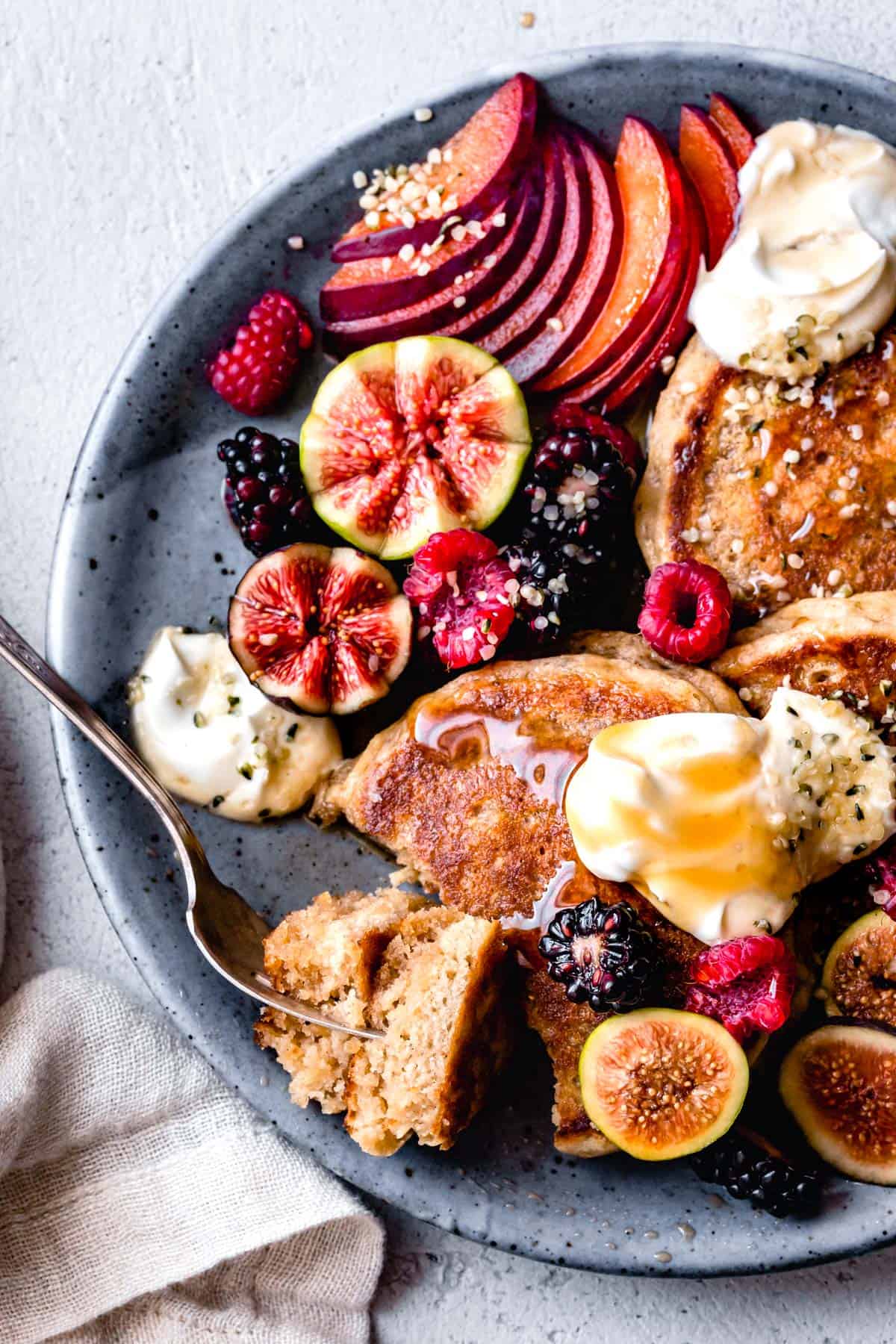
Sorghum Flour
Sorghum flour has a mild, grassy, nutty flavor that reminds me of a cross between corn flour and brown rice flour. It's a staple of gluten-free baking and can be found in many gluten-free flour blends.
- AKA: Milo flour, sweet white sorghum flour
- Flavor: Earthy, nutty, vegetal, mild, sweet
- Feel: Fairly fine with a bit of gritty/sandy texture
- Weight per cup: 4.25 ounces (120 g)
- Substitute by weight: millet flour, oat flour
- Recommended Brand: Bob’s Red Mill
- Use it: in conjunction with softer, milder flours such as sweet rice and oat. Don’t use more than 30–50 percent in most recipes or the texture will be dense and brittle. Pairs well with stone fruit, berries, apples, pears, chocolate, spices (especially cinnamon), honey, dairy, and nuts
- Health benefits: High in antioxidants (more per serving than blueberries and pomegranate) as well as fiber, protein, unsaturated fat and the minerals phosphorus, calcium, potassium and iron
Favorite sorghum flour recipes:
- Fluffy Gluten-Free Pancakes (DF & vegan options): Sorghum adds earthy-sweet flavor to these pillowy pancakes that you'll want to drench in maple syrup and butter.
- Gluten-Free Blueberry Coffee Cake: You'll never guess this light, buttery cake topped with berries and streusel is actually gluten-free thanks to a magical blend of sorghum, sweet rice, and oat flours.
- Find more sorghum flour recipes here!
Flavorful Gluten-Free Flours
When you want extra flavor in your baking, turn to these flavorful gluten-free flours.
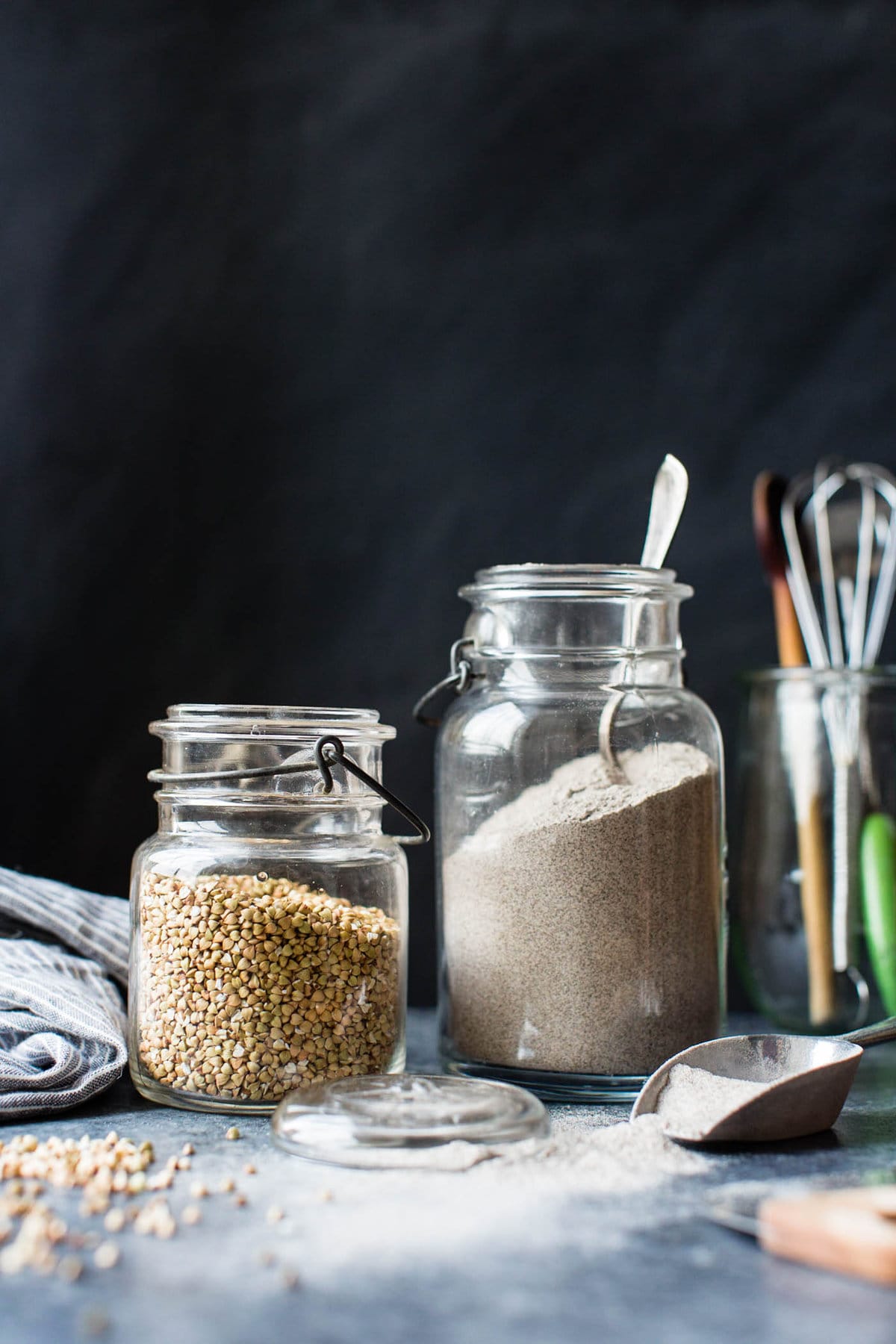
Buckwheat Flour
Buckwheat is one of my favorite flours thanks to its rich, earthy flavor that smacks of toasted hazelnuts and cinnamon. It pairs especially well with chocolate, and it bakes up sturdy and tender thanks to a good balance of protein and and starch. Most buckwheat flour is made from toasted grain and is sometimes called dark buckwheat flour. Light buckwheat flour, which isn't as readily available, tastes more mild and neutral, similar to oat flour.
Known as blé noir in French, meaning “black grain,” it is commonly used to make savory crepes. In Japan it stars in soba noodles and buckwheat tea, and it’s widely used in eastern Europe as both a flour and the cooked grain dish kasha.
- Flavor: Deep, rich, warm, with notes of cinnamon, coffee, chocolate, toasted hazelnuts
- Feel: Soft, starchy, delicate, cakey
- Recommended brand: Bob’s Red Mill (not certified GF), Arrowhead Mills
- Weight per cup: 5 ounces (140 g)
- Substitute by weight: teff flour, chestnut flour, oat flour
- Use it: in conjunction with softer, milder flours such as sweet rice and oat to soften its strong flavor. Pairs well with chocolate, nuts (especially hazelnuts and walnuts), bananas, apples, pears, blueberries, maple, and spices (especially cinnamon)
- Health benefits: High in protein, iron and other minerals, as well as the amino acid lysine, said to prevent canker sores. In traditional Chinese medicine, said to have warming properties and to aid digestion.
Favorite buckwheat flour recipes:
- Gluten-Free Banana Buckwheat Pancakes: aka the breakfast I want to eat every day! Buckwheat, bananas, toasted pecans, and maple syrup are a heavenly match in these easy-peasy fluffy pancakes.
- Banana Buckwheat Muffins: A reader favorite! Moist and tender and loaded with chocolate chunks and big banana flavor.
- Vegan Almond Butter Chocolate Chip Cookies: Buckwheat flour makes magic in these pantry-friendly CCCs that happen to be GF, vegan, and maple-sweetened.
- Find more buckwheat flour recipes here!
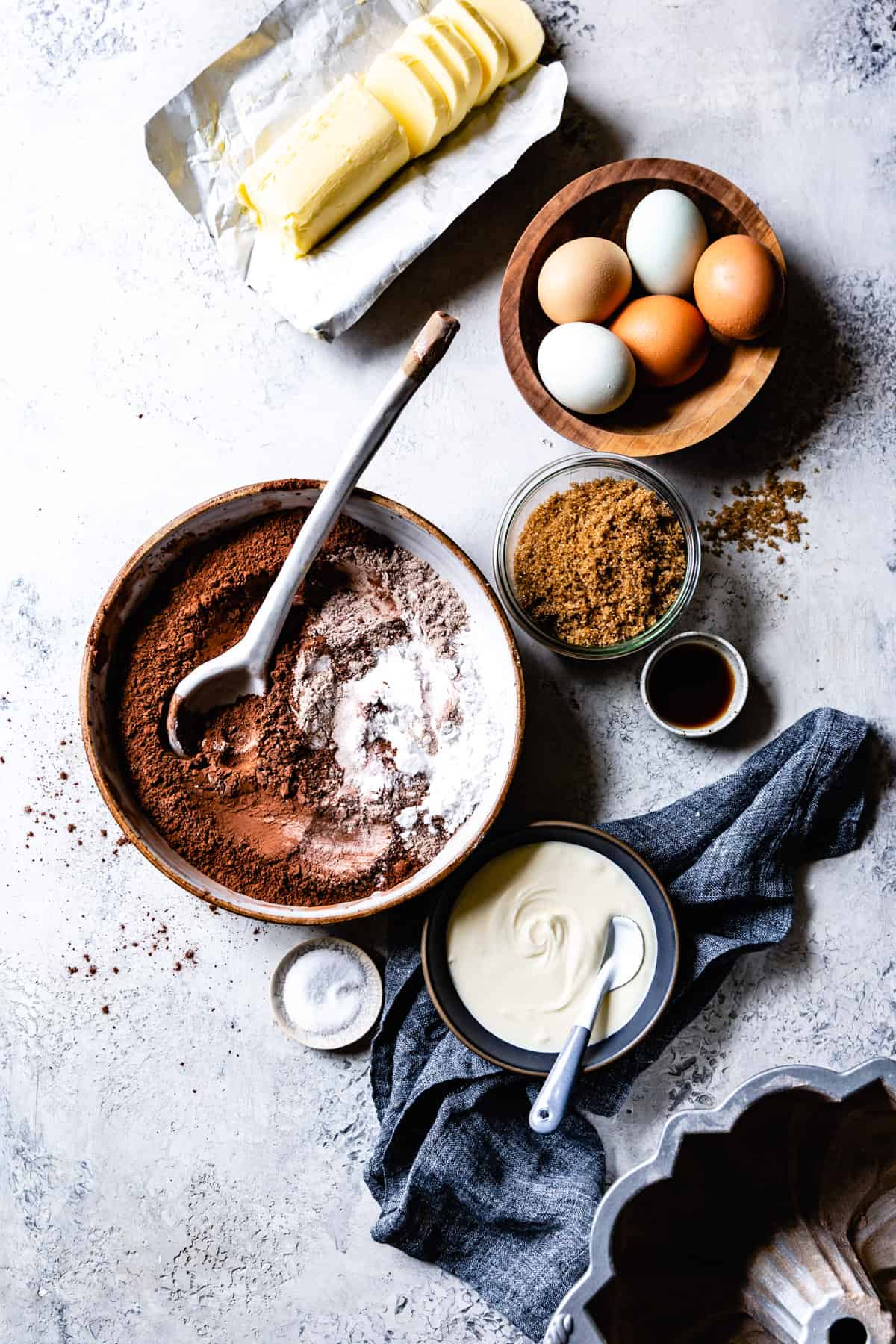
Teff Flour
This teeny, tiny grain hails from Ethiopia and is best known for injera, the fermented flatbread used to scoop up curries and stews. But it works beautifully in gluten-free desserts too! Teff's flavor reminds me of malted chocolate milk – smooth, earthy, and slightly sweet. Its high protein content lends a sturdy texture to gluten-free baked goods.
Teff flour comes in both ivory and brown forms. Brown teff seems to be more common and it's the one I refer to here. Ivory teff is more neutral in flavor but the two can be used interchangeably.
- Flavor: Warm, sweet, malty, milk chocolate, caramel, butterscotch
- Feel: Fairly soft and starchy with a bit of grainy texture
- Recommended Brands: Bob’s Red Mill, Teff Co. Maskal Teff (my favorite! - has a slightly finer grind than Bob's)
- Weight per cup: 4.5 ounces (130 g)
- Substitute by weight: buckwheat flour, chestnut flour, oat flour
- Use it: Teff flour’s warm, earthy flavor pairs well with chocolate, coffee, apples, pears, figs, spices, nuts, bananas, maple, caramel, brown sugar and spirits. Stone fruit such as peaches, plums and cherries contrast nicely with teff.
- Health benefits: Very high in iron (nine times more than wheat) and calcium (five times more than other cereal grains), vitamin C (which is rare in grains) and protein (a 2-ounce serving of teff has the same amount of protein as an extra-large egg).
Favorite teff flour recipes:
- Oatmeal Teff Chocolate Chip Cookies: these are my husband's favorite-ever cookies. Teff flour adds earthy notes that complement butterscotchy brown sugar, chewy oats, and chunks of dark chocolate.
- Gluten-Free Chocolate Bundt Cake: Teff flour gives this handsome cake a sturdy crumb, all smothered in boozy chocolate ganache for a knock-out dessert.
- Gluten-Free Graham Crackers: Light, crispy, buttery, and so much better than store-bought. With notes of honey, cinnamon, and teff flour goodness. Use them to make an extra-special gluten-free graham cracker pie crust.
- Find more teff flour recipes here!
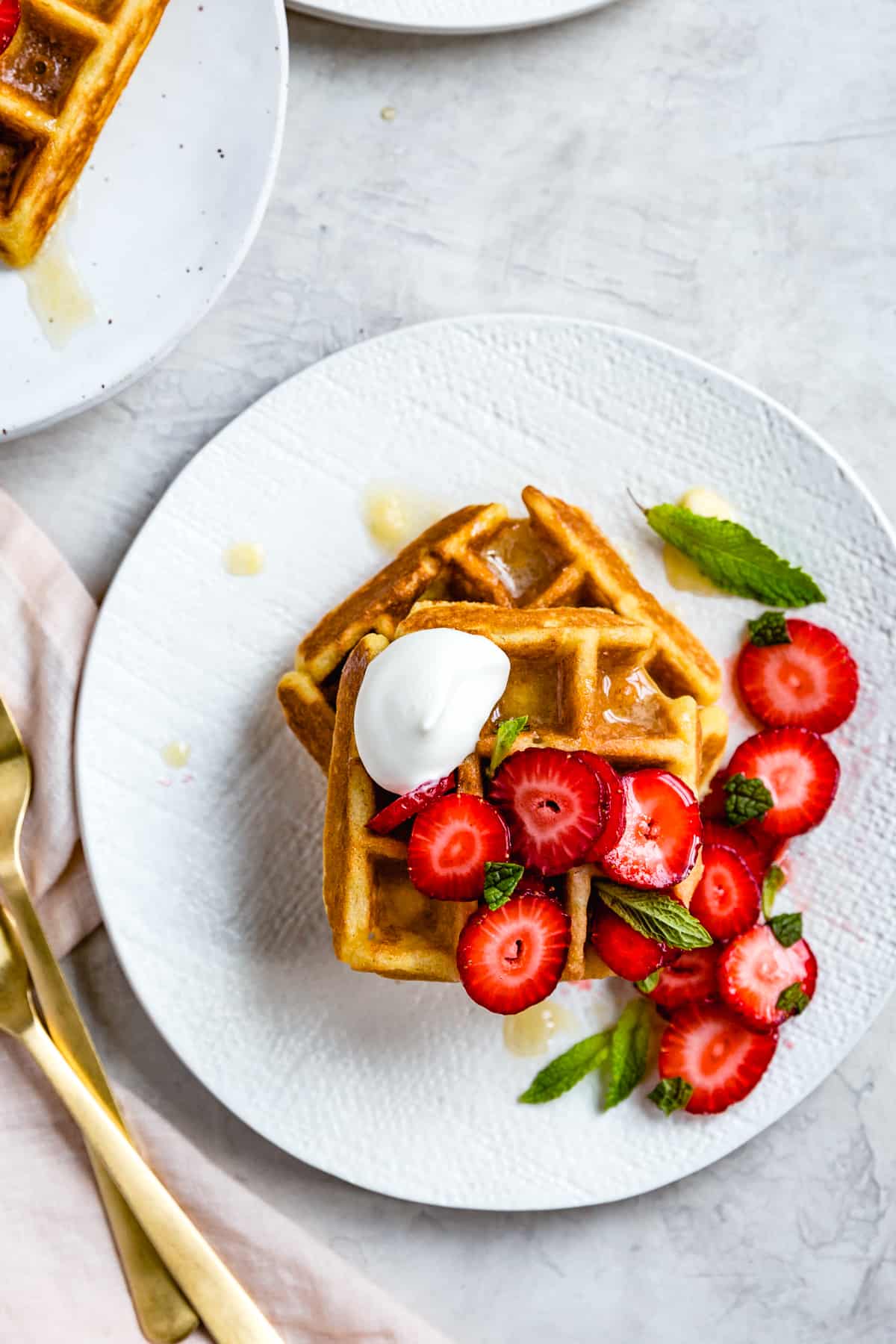
Corn Flour
Butter-yellow corn flour is not only high in fiber, protein, and nutrients like iron and phosphorous, it’s also high in flavor. Sweet, mild, and grassy, it adds a golden hue to baked goods just like cornmeal, but with a more refined texture.
- Flavor: Nutty, warm, vegetal, sunny, buttery, bitter undertones
- Feel: finely ground and tends to clump; it makes for delicate, tender baked goods that can be brittle if not combined with other stickier flours.
- Weight per cup: 4.25 ounces (120 g)
- Substitute by weight: millet flour
- Recommended brand: Bob’s Red Mill
- Use it: With light, bright flavors: honey, rhubarb, berries, stone fruit, citrus, vanilla, dairy. Corn has a fairly brittle texture, so don’t use more than 50 percent corn flour in most baking recipes.
- Health benefits: High in protein, fiber, iron and phosphorous
- Corn Flour Waffles: smother these in whipped honey butter and fresh berries for a special gluten-free brunch date.
- Corn Flour Fruit Cobbler: Craggy biscuits kissed with butter and corn flour sop up juices from jammy roasted stone fruit and berries.
- Corn Flour Tart Crust: fill this crust with baked ricotta for an elevated cheesecake vibe and top with citrus supremes or other seasonal fruit.
- Find more corn flour recipes here!
Grain-Free Flours
If you're avoiding grains for health reasons, doing a Paleo or grain-free diet, or just want some delicious flours that happen to be grain-free, these are for you!
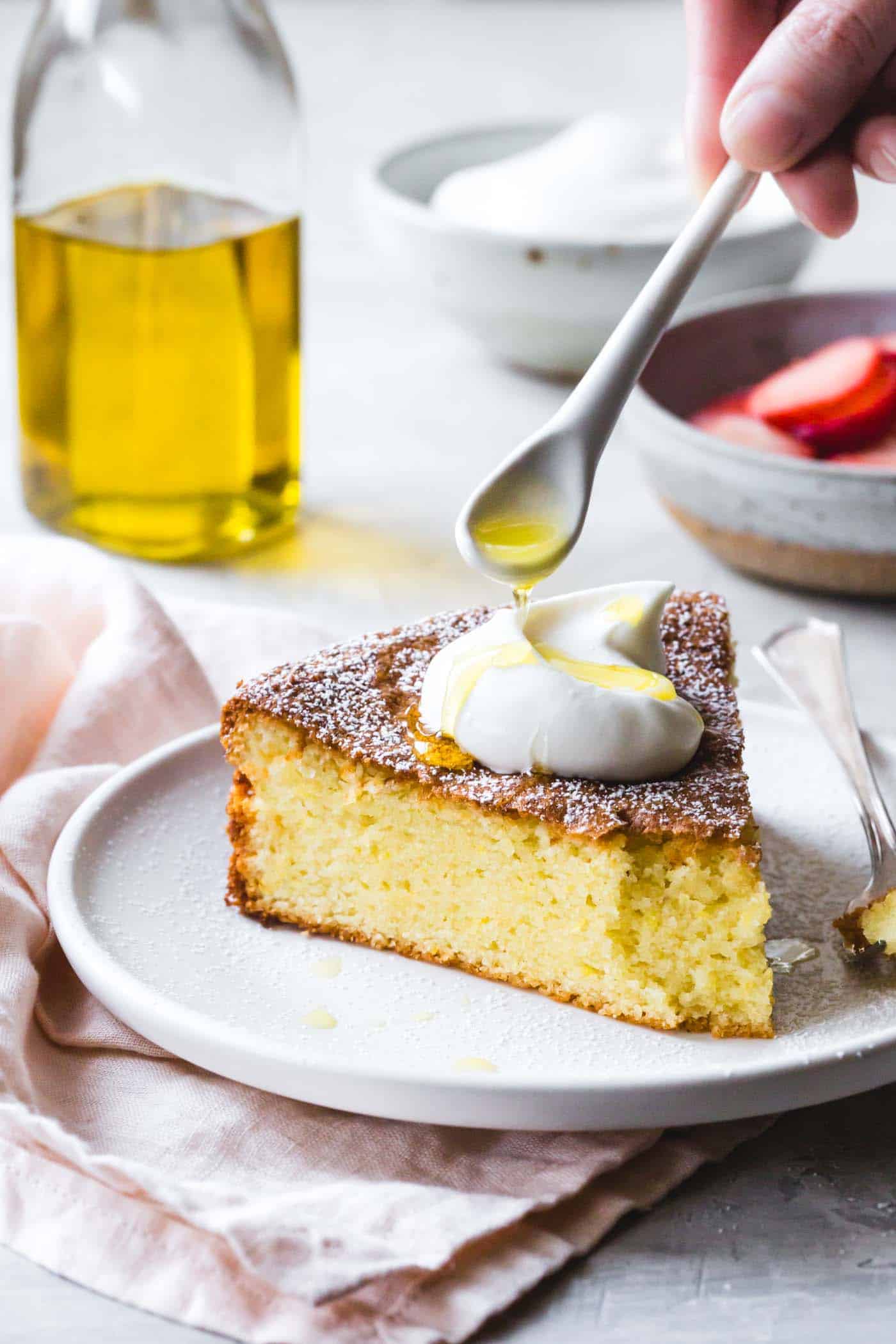
Almond Flour
Sweet, mild, and loaded with protein, fiber, and healthy fats, almond flour has the power to transform ordinary baked goods into extraordinary gluten-free treats!
- Flavor: Mild, nutty, rich, buttery
- Feel: Slightly coarse and nubby, but soft and delicate, tends to clump
- Recommended Brand: Bob’s Red Mill Blanched Almond Flour/Meal
- Weight per cup: 4.25 ounces (120 g)
- Substitute by weight: almond meal (almonds ground with the skins on for a slightly darker color and more fibrous texture), hazelnut meal, other nuts or seeds ground finely, tiger nut flour (for nut-free)
- Use it: In almost anything where you don’t mind a slightly nutty flavor and a bit of nubby texture. Particularly tasty with stone fruit, berries, figs, apples, pears, citrus, chocolate, coffee, other nuts, and honey. Don’t use more than 50–75 percent almond flour in any given recipe lest you wind up with a dense, macaroon-like texture and assertive almond flavor (unless that’s what you’re going for).
Favorite almond flour recipes:
- Almond Flour Crepes: Lacy yet sturdy, these paleo-friendly crepes can swing sweet or savory.
- Gluten-Free Almond Flour Tart Crust: A reader favorite! This easy press-in tart crust tastes like buttery shortbread.
- Lemon Almond Olive Oil Cake: Almond flour makes this cake extra tender and delicate while olive oil adds complex flavor.
- Paleo Apple Crisp: A nutty almond flour streusel tops maple-roasted apples for a perfectly simple fall dessert.
- Find more almond flour recipes here!
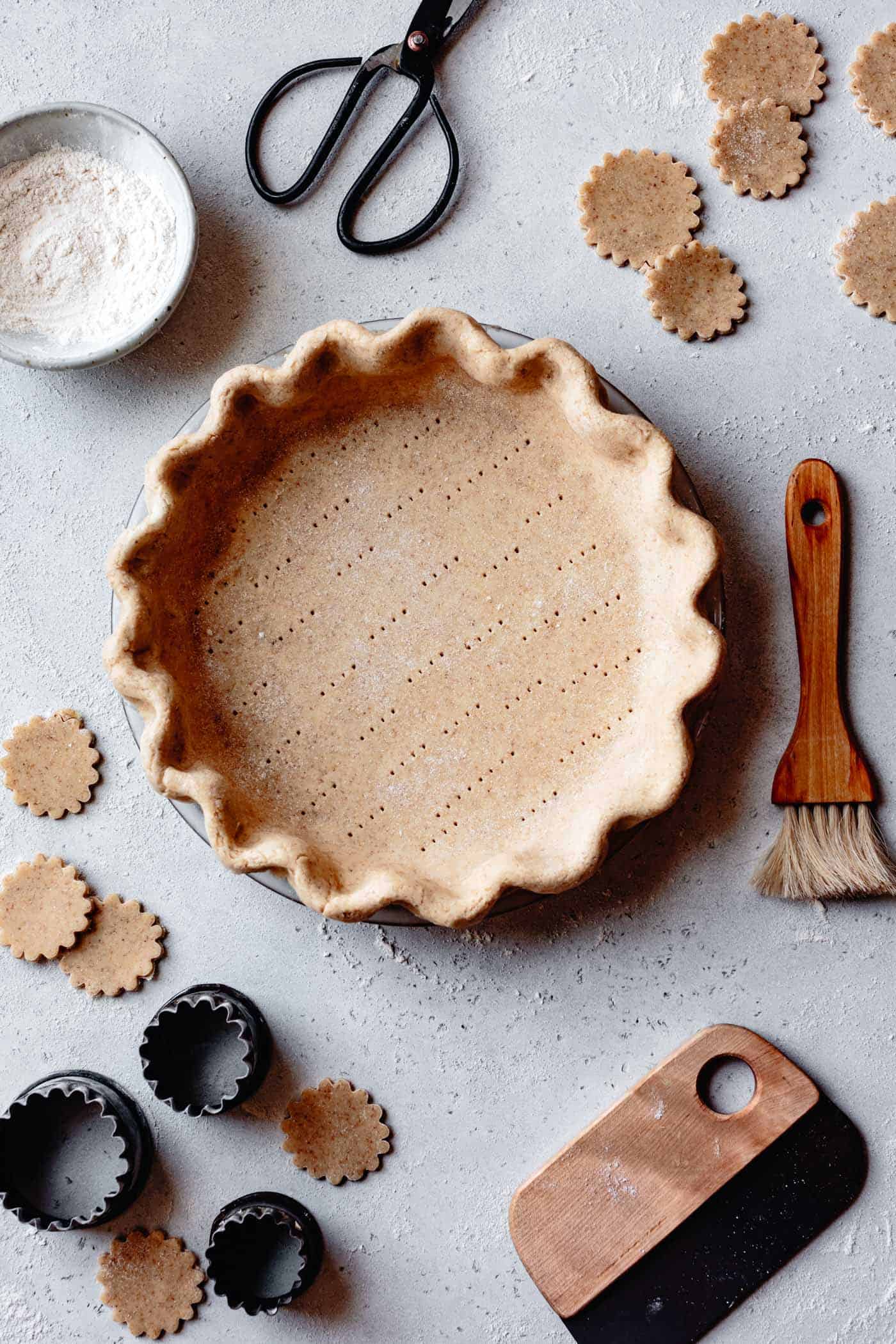
Cassava Flour
Cassava is widely used in Latin American and Southeast Asian cuisine. Made from the yucca root, it's gained popularity in the US for being a paleo-friendly flour that can be turned into everything from pasta to tortillas to chips. It's brilliant in paleo baking thanks to its sticky, starchy texture, turning out delicious crepes, banana breads, and even pie crust.
- Flavor: Mild, neutral, slightly sweet
- Feel: soft, starchy, sticky
- Recommended Brands: Bob’s Red Mill, Otto's (may have a slightly gritty texture)
- Weight per cup: 5.5 ounces (155 g)
- Substitute by weight: sweet rice flour, paleo all-purpose blend such as Bob's Red Mill (Note that although tapioca starch is made from the same root, it can't be substituted one to one with cassava flour as cassava contains the whole root, fiber and all, while tapioca is just the starch.)
- Use it: in conjunction with other flours such as almond, coconut, or tiger nut in any baked good. Cassava's neutral flavor goes with everything from chocolate to fruit to nuts and spices.
Favorite cassava flour recipes:
- Paleo Chocolate Chip Cookies: Thick, chewy cookies that satisfy like classic CCCs. These are also vegan and free of grains, sugar, dairy, and eggs.
- Cassava Flour Crackers: Rustic and loaded with seeds in the style of the Swedish Knäckebröd, these crispy crackers are easy to make. Free of grains, dairy, eggs, and nuts.
- Paleo Pie Crust: A blend of cassava, almond, and tapioca flours makes the most divinely flaky pie crust.
- Find more cassava flour recipes here!
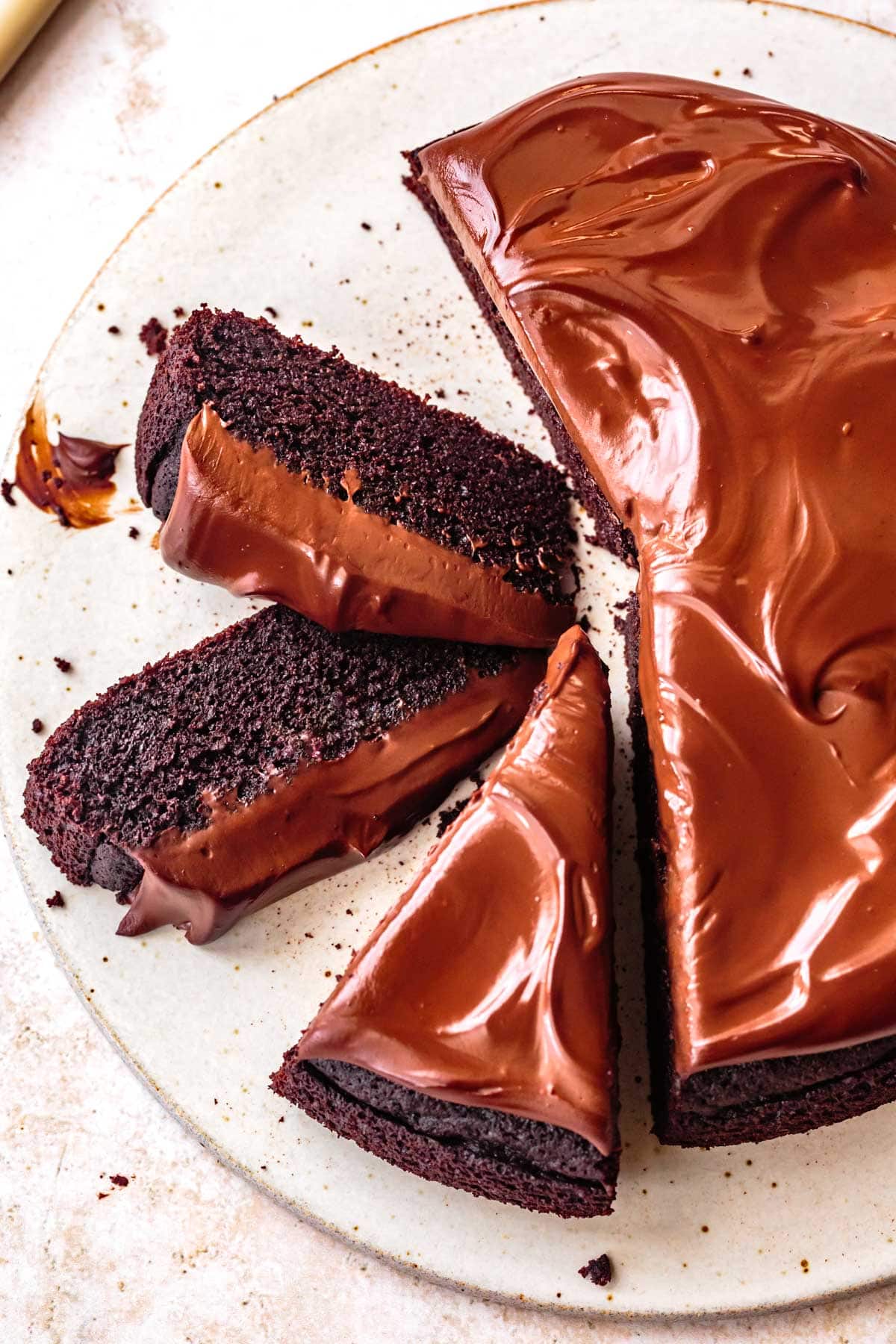
Coconut Flour
Coconut flour is made from dried, unsweetened coconut that has had a large amount of its fat removed, making it rich in fiber and highly absorbent. With its sweet flavor, soft texture, and high protein content, coconut flour is a boon to baking – just be sure to increase the liquid ingredients to appease this thirsty flour.
- Flavor: Mild, sweet, floral
- Feel: Powdery, fibrous, tends to clump
- Recommended Brand: Bob's Red Mill
- Weight per cup: 4.25 ounces (120 g)
- Substitute by weight: Coconut flour is the only flour that is so absorbent, it can't be directly subbed for any other flour. It's roughly 3x as absorbent as almond or cassava flour, so if you're swapping coconut flour in for one of those flours, use one-third the amount to start with and experiment at your own risk!
- Use it: in conjunction with other sticky flours such as cassava, sweet rice, and tapioca in cakes and other baked goods. Coconut flour pairs well with vanilla, tropical fruits, berries, chocolate, and citrus.
Favorite coconut flour recipes:
- Super-Moist Coconut Flour Chocolate Cake: This fudgy chocolate cake gets the dreamiest texture thanks to coconut flour.
- Gluten-Free Coconut Flour Banana Cake: One of my very favorite recipes, with a lofty crumb, big banana flavor, and a boozy chocolate ganache on top.
- Paleo Lemon Cake: A super moist and tender cake that sings with lemon, all slathered in paleo "cream cheese" frosting. Free of nuts, grains, sugar, and dairy and easy to make.
- Coconut Flour Vanilla Layer Cake: a moist and springy cake that makes an ideal birthday cake.
- Find more coconut flour recipes here!
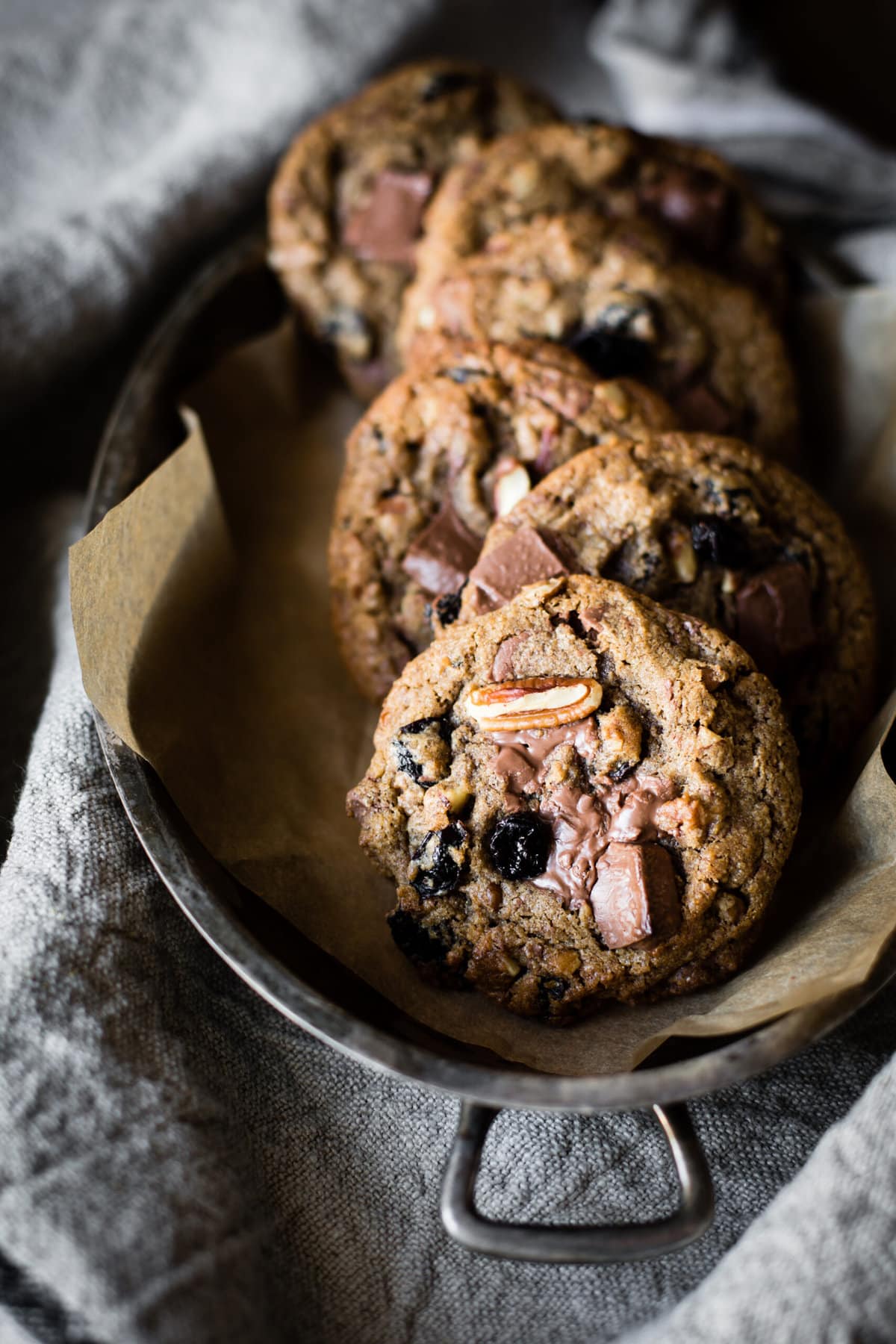
Chestnut Flour
Chestnut flour is made by grinding either raw or roasted, dried chestnuts into a powder. Its soft, starchy texture bakes up smooth and light, similar to cake flour but with twice the flavor. It tastes sweet and nutty, pairing beautifully with fall and winter flavors like warm spices, orchard fruit, nuts, and chocolate.
- Flavor: Sweet, nutty, sometimes slightly smoky with hints of bitterness
- Feel: Soft, starchy, cakey, tendency to clump
- Recommended Brand: Calleris
- Weight per cup: 3.75 ounces (105 g)
- Substitute by weight: Oat flour or teff flour.
- Use it: in conjunction with neutral flours to soften its strong flavor, such as cassava or sweet rice flour. Chestnut flour is especially lovely paired with chocolate, spices, and maple syrup in cakes, cookies, and brownies
- Chestnut flour crepes (& cheese blintzes): Chestnut flour adds earthy flavor and a tender, dumpling-like texture to these lacy crepes. Roll them up with sweet cheese filling and fry them in butter for blintzes!
- Maple Chestnut Pudding Chomeur: These maple-scented self-saucing puddings get a dreamy texture and earthy flavor from chestnut flour.
- Chestnut Flour Brownies and Chocolate Chip Cookies: 2 favorite recipes in my book Alternative Baker!
- Get more chestnut flour recipes here!
Starches
Starches add – you guessed it! – starch to gluten-free baked goods, adding structure and helping them rise. Starches are low in nutritional value and flavor, which is why I try to use them sparingly in my recipes.
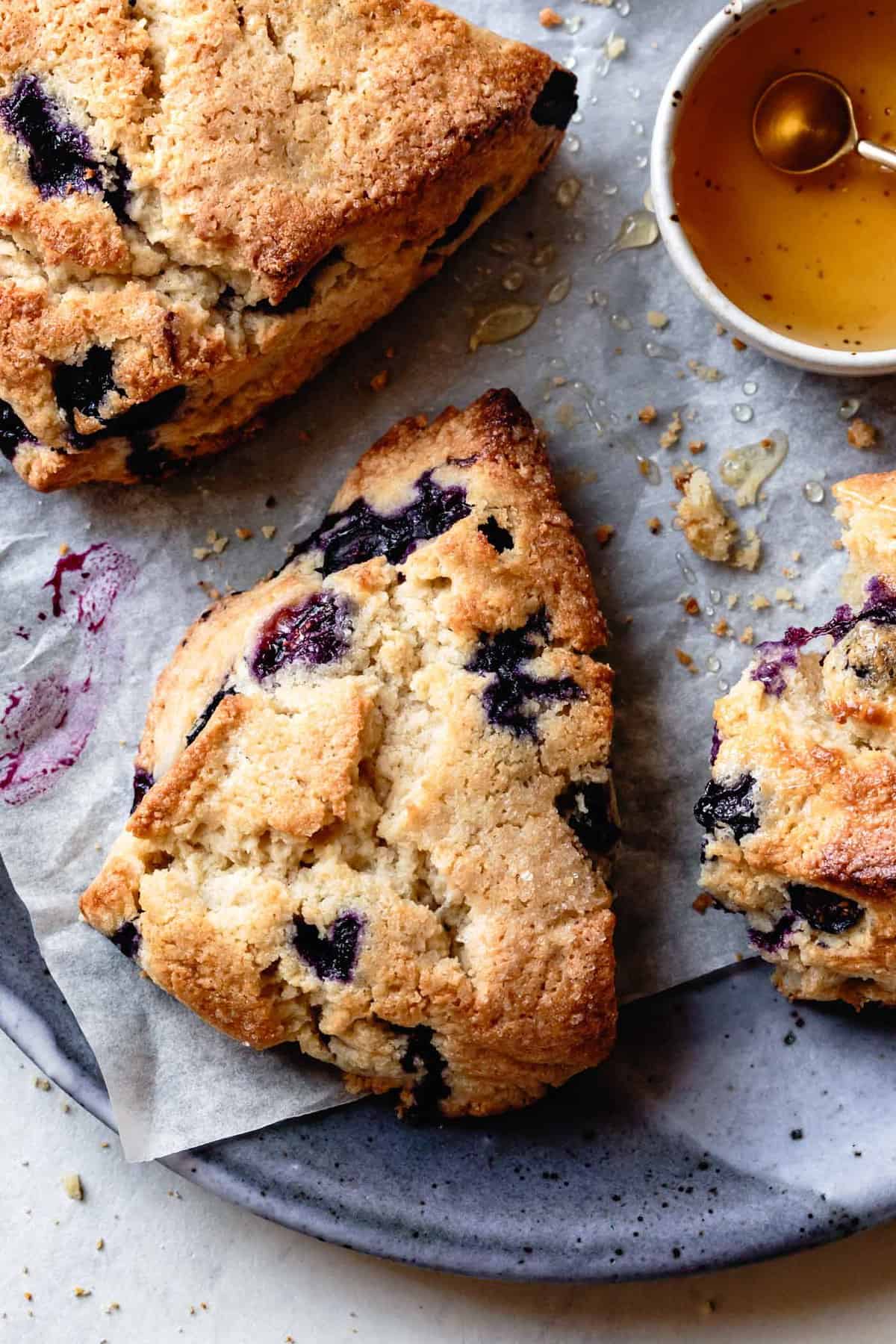
Tapioca Starch
Tapioca starch (aka tapioca flour) is made from the same root as cassava (yucca) but without the fiber. It adds extensibility (fancy word for stretch) to baked goods. It makes pie crust shapeable, makes cakes and muffins bake up light and fluffy, and makes cookies chewy.
Substitute by weight: arrowroot starch
Corn Starch
Corn starch thickens puddings and fruit fillings, and it makes pie crust flaky and crisp.
Substitute by weight: there is no direct sub for corn starch, especially in puddings (tapioca starch makes them kinda slimy). But in baked goods, tapioca flour can be swapped in. Don't use potato starch, which makes baked goods soggy.
Gums: Xanthan Gum, Guar Gum, etc.
I've stopped using xanthan gum or other gums in my recipes. When I need some extra stickiness or stretchiness in a recipe, I add some ground flax or chia seed, such as in my gluten-free pie crust and gluten-free pizza crust.
I've found that many of my readers can't tolerate xanthan gum and ask for substitutes. It can be hard on the gut lining for those of us with GI issues. And I found that most recipes don't benefit from it when they have a good balance of starch and protein from the flours. In other words, my gluten-free & gum-free recipes taste better and are better for you too!
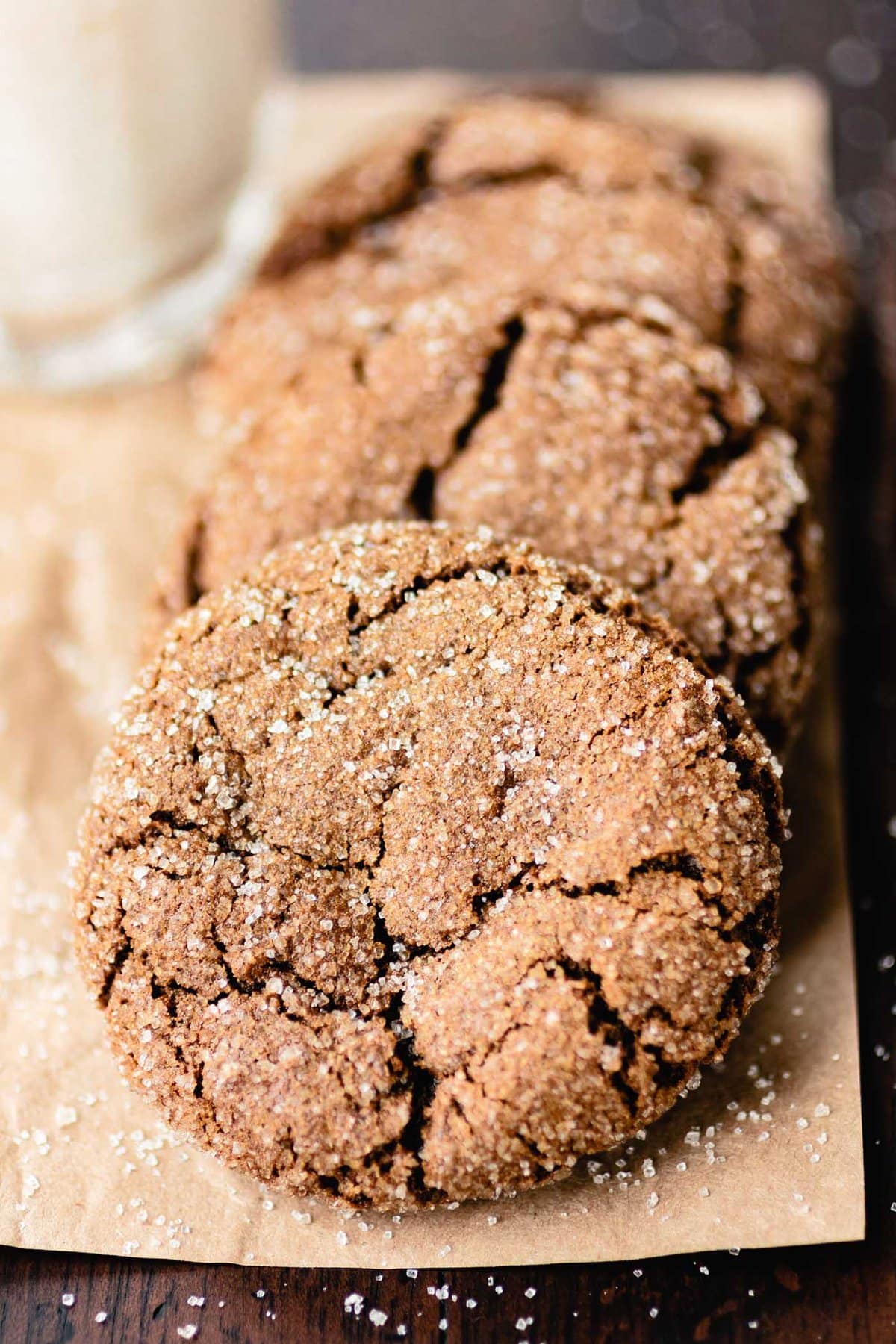
Less Common Gluten-Free Flours
These flours are great to use in gluten-free baking, but less common in my recipes.
- Amaranth Flour: similar to quinoa flour but with a milder flavor. I've shared a few amaranth flour recipes in my cookbook including amaranth peach scones and strawberry rhubarb cobbler.
- Banana Flour: I have yet to experiment with banana flour – I think it's the only gluten-free flour I haven't tried!
- Mesquite Flour: ground from the pods of mesquite trees, this flour is used most commonly in the Southwestern United States and it tastes like graham crackers – warm and earthy. I have a few mesquite flour recipes in my cookbook including mesquite gingersnaps, mesquite tart crust, and mesquite chocolate cake. Plus I shared a mesquite chocolate chip cookie recipe on Food52!
- Tiger Nut Flour: not a nut but ground from a tuber. Tiger nut flour makes a nice nut-free substitute for almond flour for those with nut allergies. I use it in these tahini chocolate chip cookies, which are grain-free and paleo.
- Hazelnut Flour: tasty and swappable for almond flour in any recipe. Pairs especially well with chocolate. Try it in this gluten-free apple hazelnut cake!
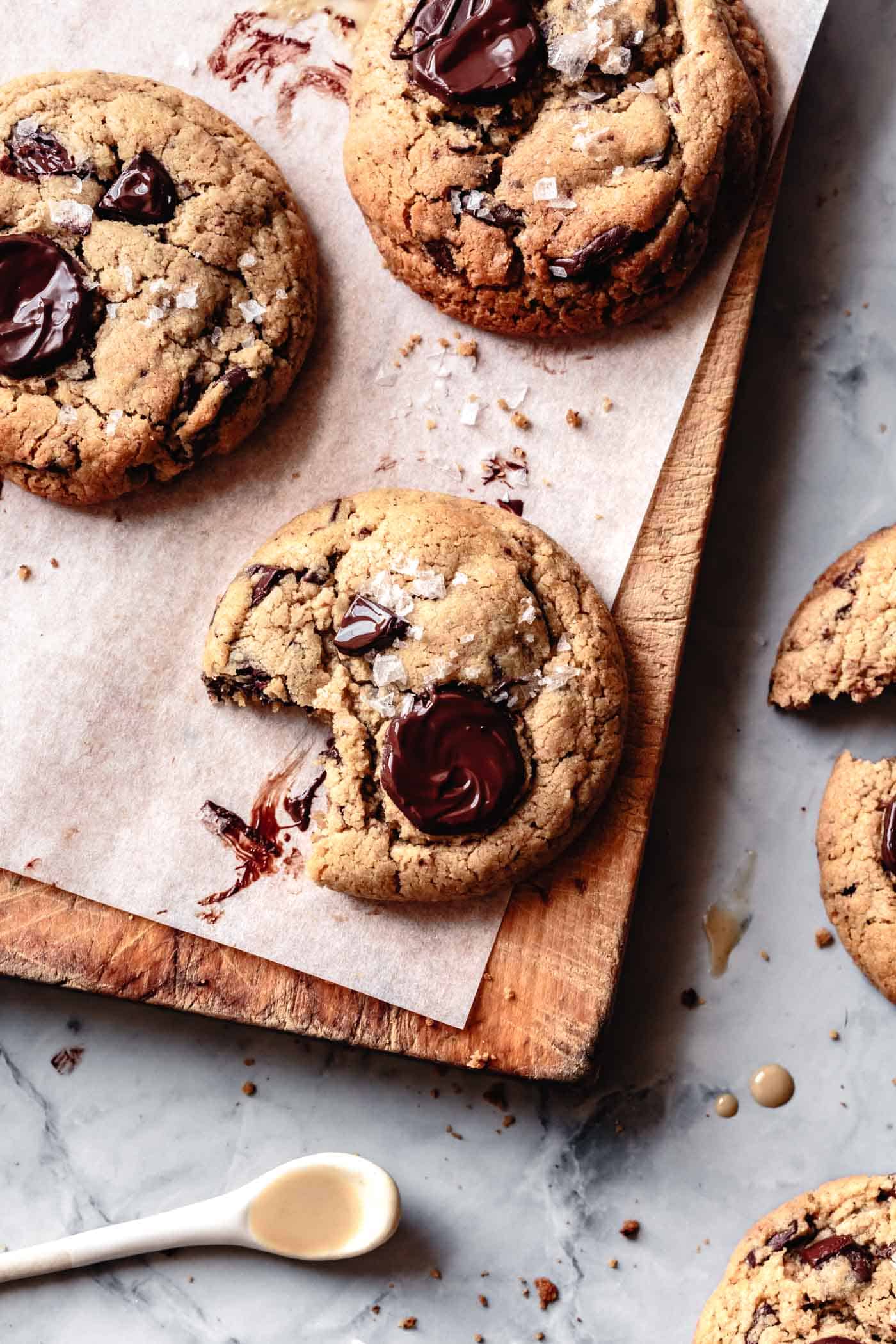
Flours to Avoid
These gluten-free flours don't float my boat. Here's why:
- Brown rice flour: tends to be gritty (unless you mail-order superfine flour); high in arsenic (and we gluten-free folks get enough of that from rice as it is!) The only place I use brown rice flour is in my gluten-free pizza crust.
- White rice flour: tends to be gritty and produce brittle baked goods. Use instead sweet rice flour, which is more smooth and sticky.
- Quinoa flour: has a strong, bitter flavor that's not suited to sweets (but works well in breads)
- Chickpea flour: has a strong beany flavor that can overpower American-style sweets, though it's commonly used in Indian desserts such as burfi, ladoo and halwa and savory items such as pakora. For those of us with GI issues, it can be hard to digest (as I personally learned when I OD'd on chickpea flour pasta – never again!)
- Soy flour: similar to chickpea flour in that it has a distinctively beany flavor and can be hard to digest.
Gluten-Free Flour Blends
There are loads of gluten-free flour blends on the market, but I still prefer blending my own flours in each recipe. This gives me more control over the final product, and it allows me to match the flavor of the baked good to flavorful flours.
But if you're looking for a good store-bought gluten-free blend, I recommend Bob's Red Mill 1 to 1 baking flour. This is based on sweet rice flour, and it makes a good sub for sweet rice flour in my recipes if you don't have any on hand.
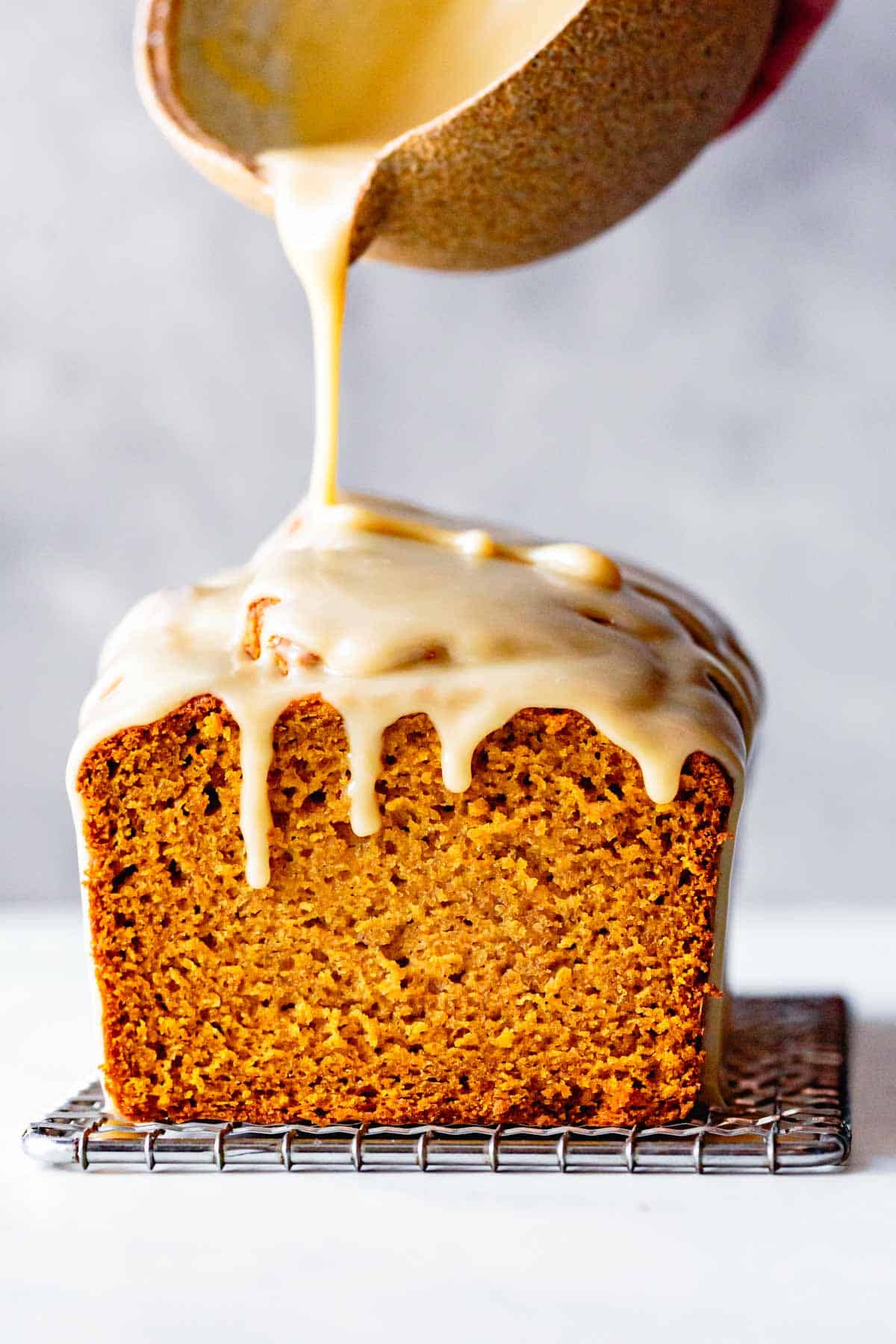
How to make your own gluten-free flour blends
When I'm developing a gluten-free recipe, here's a go-to springboard formula that I use for a gluten-free flour blend in place of 1 cup of all-purpose wheat flour:
- 1/3 cup sticky & neutral flour (such as sweet rice or cassava)
- 1/3 cup starchy flour (such as oat, millet, or sorghum)
- 1/3 cup flavorful flour (such as almond, sorghum, teff, buckwheat, or chestnut)
- 1-2 tablespoons tapioca flour
And here's a rough starting point for a grain-free flour blend to use in place of 1 cup of all-purpose wheat flour:
- 1/2 cup cassava flour
- 1/2 cup blanched almond flour (or tiger nut flour for nut-free)
- 1-2 tablespoons tapioca flour
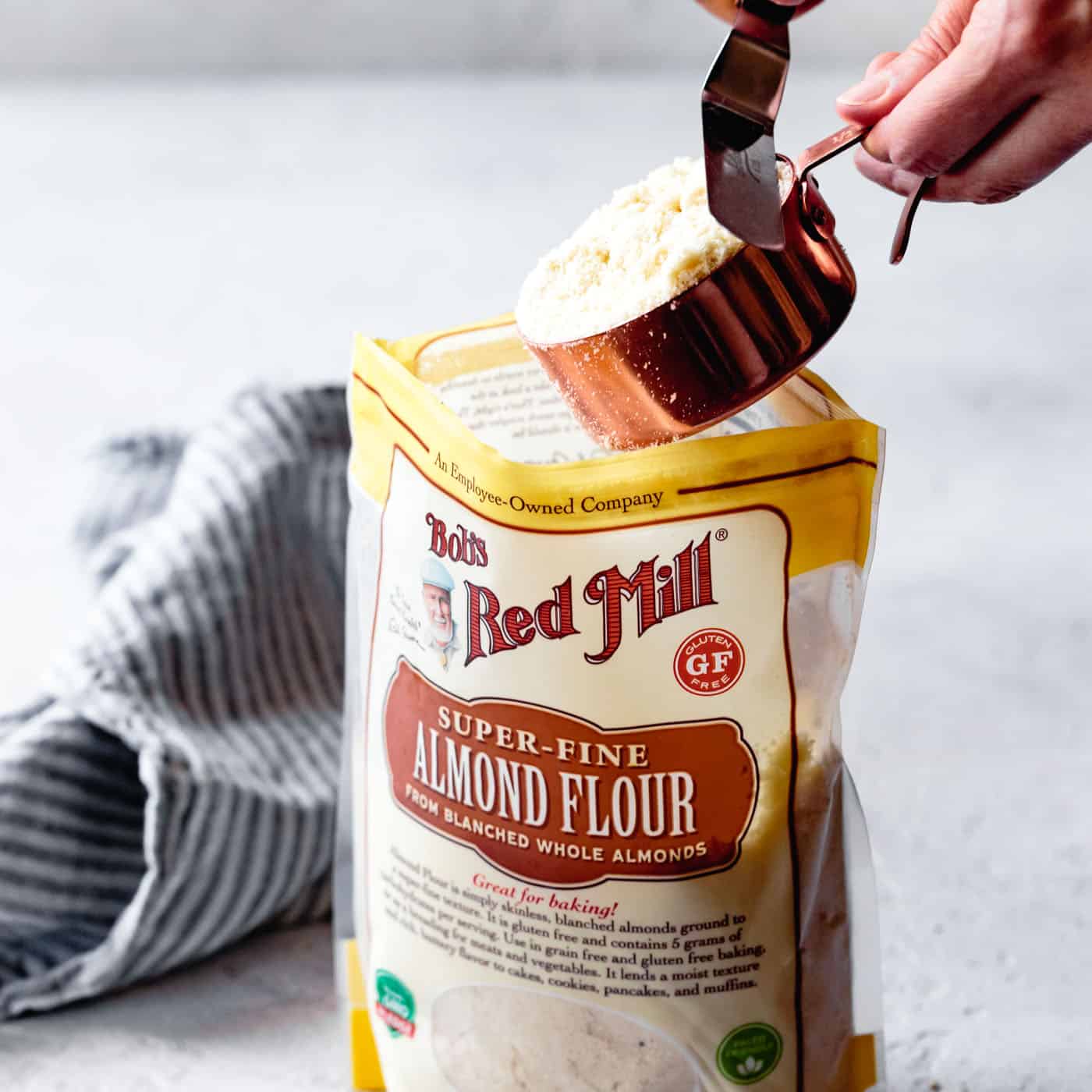
Gluten-Free Baking Tips
Some guidelines to follow for foolproof gluten-free goodies every time.
- Measure by weight. It's more accurate and makes fewer dishes to wash – win-win! This is the scale I use.
- Use the dip and sweep method for measuring flours if you don't have a scale. Use a dry measuring scoop, dip it into your bag or jar of flour, then use an offset spatula or flat part of a knife to sweep away the excess flour.
- Substitute by weight. Different flours have different weights for the same volume, as you've seen in the descriptions above. Using weights gives you a better chance for successful swaps.
- Brands matter. Different brands of flours are ground differently. So if you can access and use the same brands of flour that I recommend in each recipe, you'll have a better chance of success.
- Don't make your own flour. It can be tough to get the grind to be the same as store-bought. This is why I always specify which brand I used to test the recipe, usually Bob's Red Mill since they're widely available.
- Storage. Most flours are best stored in a cool, dry place unless otherwise noted. You can store gluten-free flours in the fridge or freezer if you have the space.
- Mind expiration dates & do a sniff test before you bake. Sometimes flours can even go rancid before you buy them. Use your nose, and if a flour smells off, it's best to say goodbye to it rather than risk ruining a baking project with questionable flour.
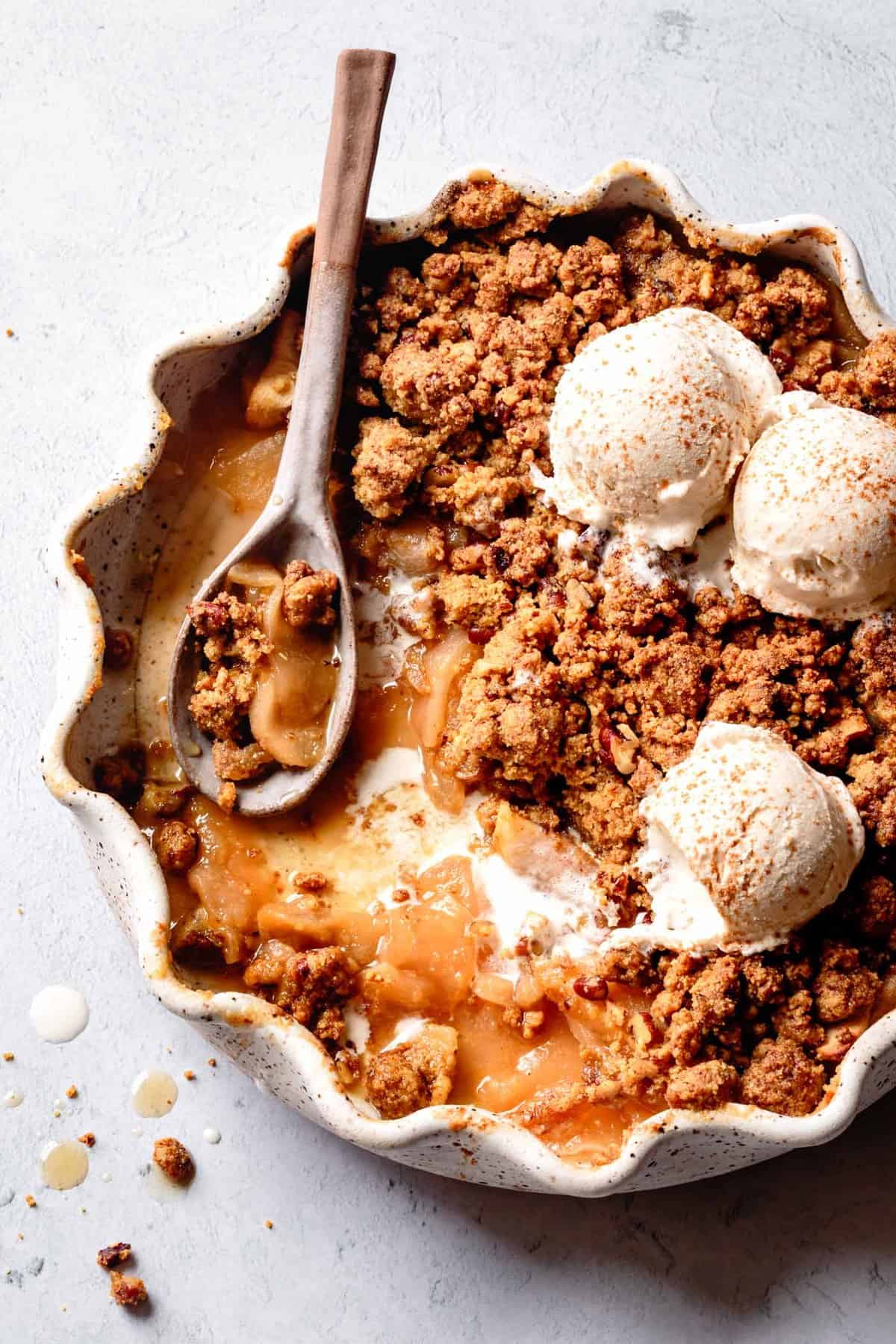
Troubleshooting Gluten-Free Recipes
Getting the texture and color right is the biggest challenge to baking with gluten-free flours. Here are a few scenarios you might encounter and how to adapt a recipe to fix these common issues:
- Crumbly and brittle: add more sticky ingredients such as tapioca starch, sweet rice flour, cassava flour, ground flaxseed or chia seed, or egg. Acidity also seems to make gluten-free baked goods more "sticky" so you can try adding a little lemon juice, apple cider vinegar, or using cultured dairy such as buttermilk or yogurt if it makes sense for the recipe. Alternatively, add more protein in the form of a higher-protein flour such as almond flour or teff flour.
- Dense or heavy: increase the leavening, add another egg or more liquid ingredients, decrease the flour, or use a lighter flour such as oat flour.
- Gummy texture: decrease the sticky ingredients such as tapioca starch, sweet rice flour, and cassava flour and add more soft flour such as oat, millet, almond, buckwheat, sorghum, etc.
- Too dry: decrease the total amount of flour, or add more sweetener, fat, or other liquid ingredients.
- Too moist or won't cook through: decrease the wet ingredients or increase the flour. Sometimes swapping egg for 1/4 cup of liquid can help a cake or quickbread set better while also making it more fluffy.
- Pale: add more fat, sweetener, or baking soda to the recipe. Or brush the baked good with beaten egg, milk, or cream and sprinkle with sugar before baking (good for scones, biscuits, and galettes, and hand pies). Or increase the oven temperature by 25-50ºF and decrease the baking time accordingly.
- Browning too much: decrease the oven temperature by 25-50ºF, or reduce the fat, sweetener, or baking soda.
- TIP: When developing a gluten-free recipe, it's best to change only one variable at a time (example: adding an extra tablespoon of flour, or tweaking the oven temperature) rather than change a bunch of variables at once. This way, you'll know which variable is making a difference. I like to make a word document with each iteration numbered so I can track the progress of a recipe as I develop it.
- Note that I usually test a recipe at least 4 times (and sometimes as many as 10 or more times) before I'm happy with it, so don't worry if you need to do the same!
Congratulations if you've made it this far! I hope you've enjoyed this post and that you're ready to get baking. If you have any questions about gluten-free flours or any of the topics covered here, please leave a note below!
Bojon appétit! For more Bojon Gourmet in your life, follow along on Instagram, Facebook, or Pinterest, purchase my gluten-free cookbook Alternative Baker, or subscribe to receive new posts via email. And if you experiment with gluten-free flours, I'd love to see! Tag your Instagram snaps @The_Bojon_Gourmet and #bojongourmet.
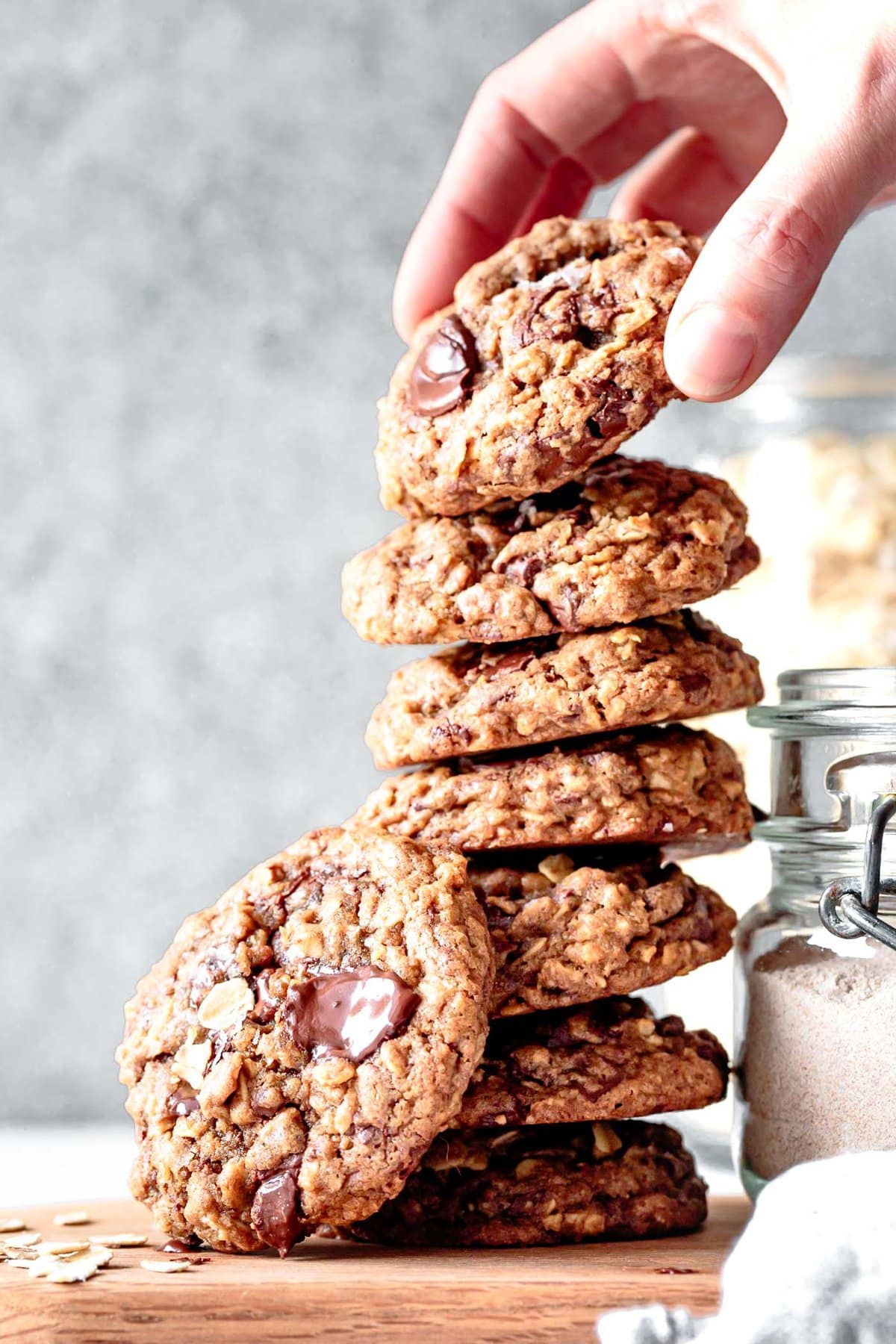


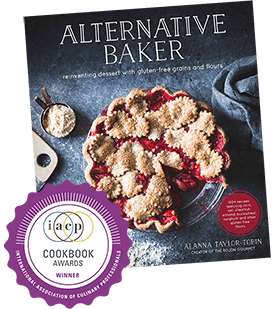

Maria Morelli says
This is great info , I was really hoping to see some recipies for making BREAD…
Your flour suggestion for bread baking would be great !!
Alanna Taylor-Tobin says
Hi Maria,
Thank you for the feedback! Funny story: I was starting to bake GF bread in 2019 when I started having some chronic health issues. I got diagnosed with mast cell activation syndrome (MCAS) and I've had to be on a low-histamine diet which includes avoiding fermented foods such as yeast. I hope to get a handle on it soon so I can go back to baking bread and add in this information.
For now I'd recommend checkout out Aran Goyoaga's books if you haven't already – she's the queen of GF bread!
Cheers,
Alanna
Maria Morelli says
Alana,
I do appreciate your feedback! Thankyou , Healing vibes your way!
Alanna Taylor-Tobin says
Aw thank you Maria, I appreciate it!
Sarah says
Thank you so much for making this post. I had actually just pulled your book off my shelf yesterday to sit down and analyze the ratios you used to try and make some of my own recipes. I really appreciate you sharing this info and not gate keeping it. It's amazing to me how far gluten free baking has improved since I began gluten free in 2009. Back then most gluten free recipes were gritty rice flour hockey pucks. I made your super moist chocolate cake recipe with the vegan ganache the other day and it was devoured very quickly!
Alanna Taylor-Tobin says
Hi Sarah,
Aw thanks very much for the kind note! I agree - it's wonderful how far gluten-free baking has come in the last 15 or so years! I'm so glad this information is useful and even happier that you loved the chocolate cake. That's one of my very favorite recipes! Please let me know what else you try.
Happy baking,
Alanna
Barbara says
Hi Alanna!
This post will be so helpful in figuring out how to make some new recipes for my daughter who has to eat a gluten-free diet. I look forward to trying some of your recipes soon. Thank you so much for this in-depth information.
Alanna Taylor-Tobin says
Hi Barbara,
I'm so glad it's helpful! Your daughter is so lucky to have a baker for a parent. Please let me know if I can help point you toward any particular recipes, and let me know if you try any of mine or if you have any questions about them!
-Alanna
TH says
Its super the way you've pulled together all this info from your various sources. Amazing post, thanks so much.
Alanna Taylor-Tobin says
Aw I really appreciate it and I'm so glad it's useful!
Megan E Howard says
A very excellent and detailed post! I remember all of the waste and tears from failed recipes many years back. I wondered at the time why there were so many bad gluten free cookbooks, and recipes that were bound to fail. But I didn't give up, and came to the different flours that you mention here by trial and error. I can't tolerate xanthan gum, and felt like a lot of recipes threw it in, not because it was needed, but because they thought they should. I use psyllium at times, instead, but it depends on the item. I have had your book for some time, and love it! And it is very true that different flour brands can be completely different; there was a cassava brand that I was buying that I loved, but that is no longer available, and the brand I bought instead was a disaster! Thank you for sharing such important information.
Alanna Taylor-Tobin says
Hi Megan,
Yes, I'm right there with you on all counts! There's no excuse for bad gluten-free baking these days.
That's so disappointing about the cassava brand! Which was the brand that you loved, and which was the one that you didn't? I'm curious! I've had readers say that their cassava flour was gritty, but I've never felt that way about Bob's Red Mill brand, so I'm interested to know more.
Cheers,
Alanna
Megan Howard says
Hey Alanna, these were Cassava flour brands I had ordered from Amazon. The one I loved was called Moon Rabbit; it had a rich taste and great texture, and I could make lasagna noodles with just that; no additional flours needed. The one I tried after Moon Rabbit was no longer available was called Simba. It was ridiculously thirsty, and too hard to gauge with it in recipes. I was using Cassava a lot when I had Moon Rabbit, but now I'm going back to more sorghum and millet. There was a millet I bought once from some seller on the internet that was wonderful-it smelled like blueberries, but I can't remember the name of the farm, so I keep looking, ha ha! I haven't tried the banana or tiger nut flours; very curious, though. Glad there are so many more options now!
Alanna Taylor-Tobin says
This is so helpful to know, thank you! It's really wild how flours can vary so drastically from brand to brand. So challenging to write recipes when this is the case. I'm glad to have readers like you who get this!
Megan Howard says
Ha ha; yes, you food bloggers are very brave who receive comments from people who followed the recipe exactly and it was a failure; however maybe it wasn't exactly followed exactly, or, as is possible, it was a different brand of this or that. I very much appreciate you forging ahead in the GF world and kindly sharing your successes!
Alanna Taylor-Tobin says
You understand completely! Heavy is the head that wears the toque ;)
Nisha says
Love this post, wow! Thanks for pulling together all the details, I will refer back to this many times! I wanted to say that chickpea flour may be worth another shot if paired with the right things - butter and sugar for sweets or spices for savory. There are a lot of Indian sweets like burfi, ladoo and halwa or savory items like pancakes, dhokla, sev that are delicious!
Alanna Taylor-Tobin says
Hi Nisha,
Thanks so much for reading and for the kind note!
I really appreciate your educating me about the use of chickpea flour in traditional Indian recipes and particularly sweets. I'll edit my description to reflect this and hopefully not sound so culturally insensitive (facepalm!) Now I'm hungry for those dishes - yum!!
-A
Lisa says
Hello,
I enjoyed your very informative article; thank you.
I have recently started cooking gluten free for my daughter and granddaughter. I usually use cup2cup flour, but just realized these gluten free flours are highly refined/processed.
Are the ones you recommend highly refined/processed as well?
Many Thanks!
Lisa
Alanna Taylor-Tobin says
Hi Lisa,
Great question! Most of the flours I discuss here are minimally processed, which is a big part of why I like to use them. The flours I use that are the most processed are tapioca starch, corn starch, and sweet rice flour, but most of my recipes use a larger proportion of the less refined flours.
Please let me know if you try any of the recipes or if I can answer any other questions!
-Alanna
Michelle says
Thank you so much for making this post! I've been playing with ideas for a gluten-free cookie to make for an upcoming cookie swap, and I was just at one of the local Indian markets debating with myself which of the many, many GF flours there to try. Your detailed descriptions and tips are really helpful, and I'll definitely be using them to narrow down my list :)
Alanna Taylor-Tobin says
I'm so glad the guide has been helpful! I'd love to know which flours you try and what kind of cookies you make with them. Happy baking!
Saskia says
I find it interesting you only mention potato starch to say that it makes baked goods soggy, as I've found it is used quite a lot in gluten free baking recipes and flour blends. Which is actually a problem for me as I'm intolerant of nightshades! So it's nice that you don't really use it in your recipes.
However I had hoped to find out from reading this article what a good substitute would be, as it does seem to have slightly different properties to other starches (in many recipes, potato starch is used alongside another superficially similar starch like tapioca or arrowroot, which suggests it has different properties). I've been considering trying to substitute sweet potato starch in those recipes, as they sell it in the Chinese supermarket I often shop in.
Alanna Taylor-Tobin says
Hi Saskia,
Yes, I tried potato starch a few times but the sogginess issue was a deal-breaker, so I haven't used it since. I do think it can be helpful to use in GF bread recipes. I haven't dived into those much yet as I have histamine intolerance and can't have yeast or sourdough, and I like to be able to enjoy the recipes I develop. However, I think sweet potato starch would likely be a good substitute and I think you should give it a try! Please report back if you do and I can add that info this post to help other readers too!
-Alanna
Robin says
I am nightshade intolerant also, and I read that all potatoes are all considered nightshade vegetables.
I know I'm intolerant to ALL potatoes, sweet, red, gold and white all potatoes.
I wanted to pass that information on, because these flours are higher priced, and I have never seen sweet potato flour.
I am sure it would be a big investment, not only in $ , but in the time required to make it.
I hope this helps, if at all.
Happy Baking!
Alanna Taylor-Tobin says
Hi Robin,
Thank you for sharing your experience with nightshades and other tubers! Sweet potatoes are actually in a different family, the morning glory family, but there could be other reasons that you (and possibly other readers) can't tolerate them, for example intolerance to sucrose, starches, fodmaps, and/or oxalates. I've got a bunch of sensitivities myself so I can definitely commiserate! Hopefully some of the other flours in this post will work for you though!
-Alanna